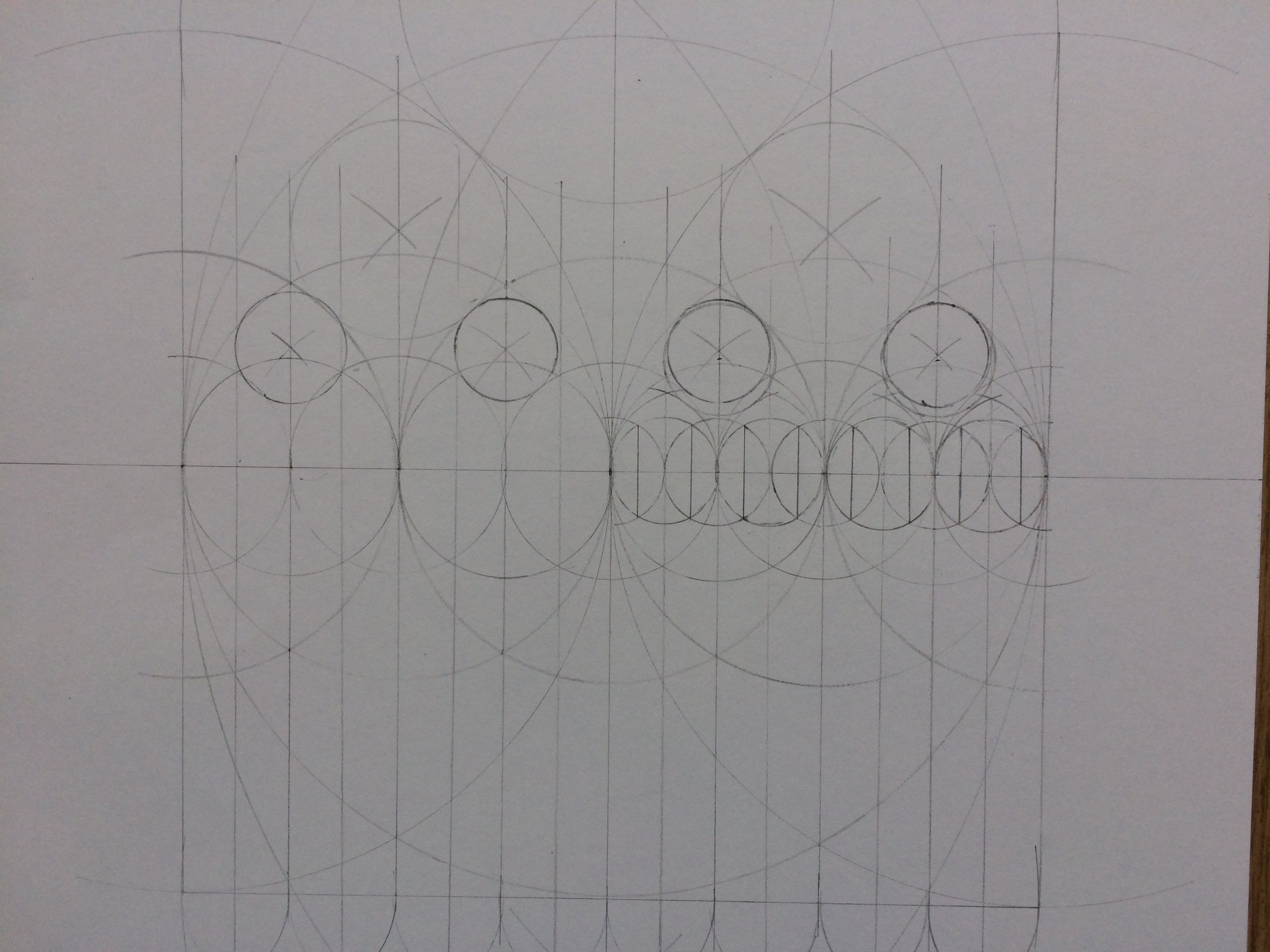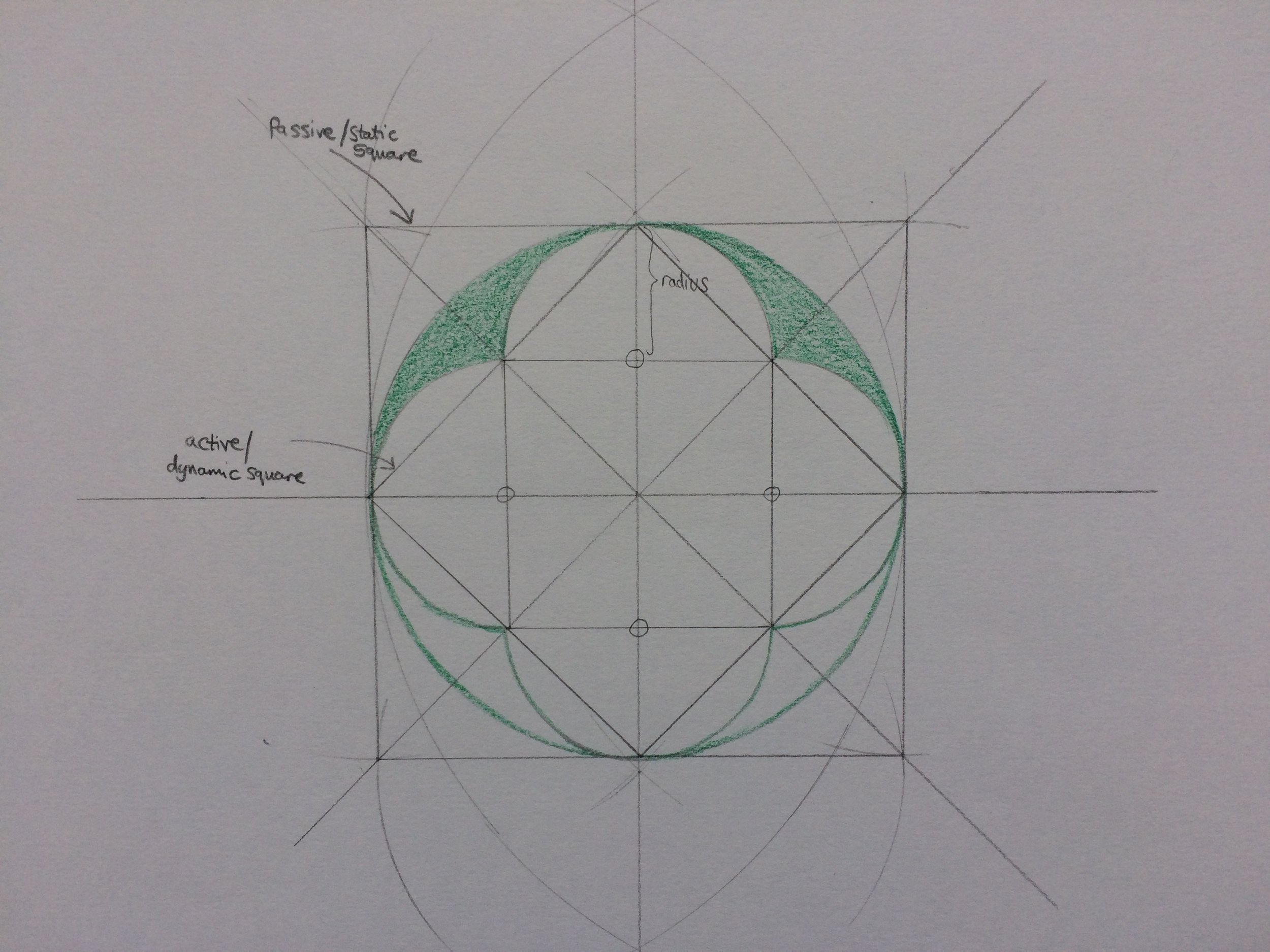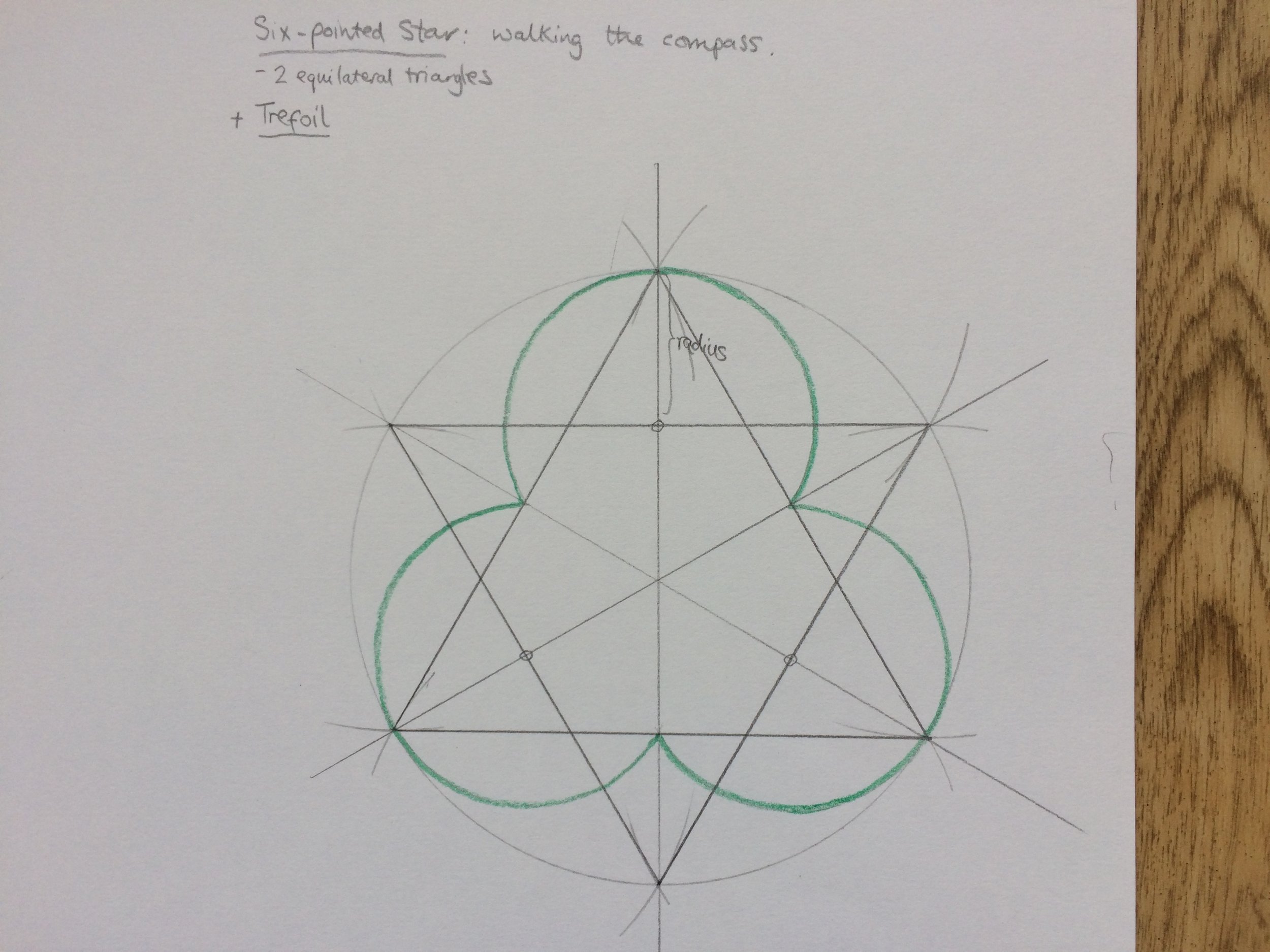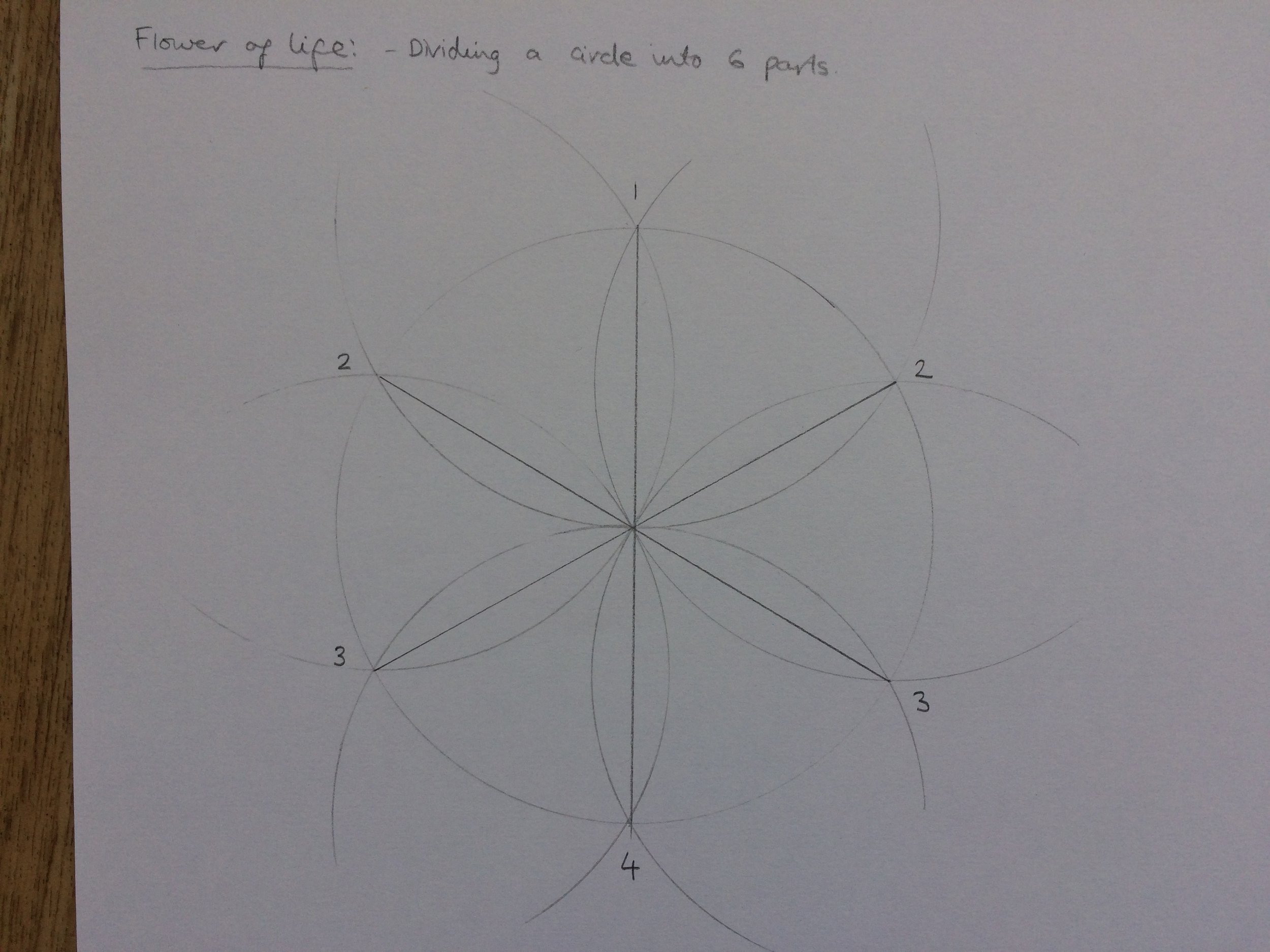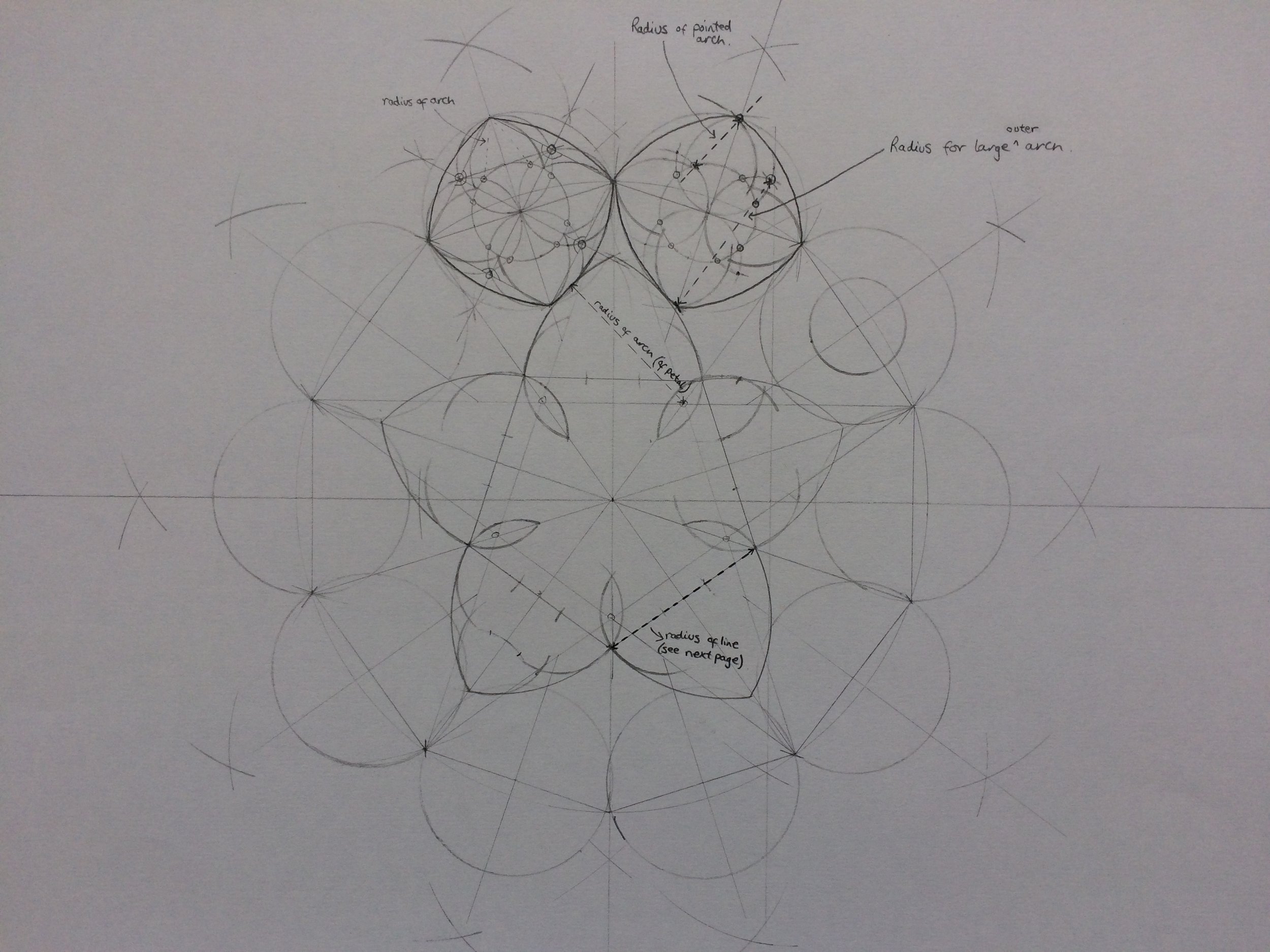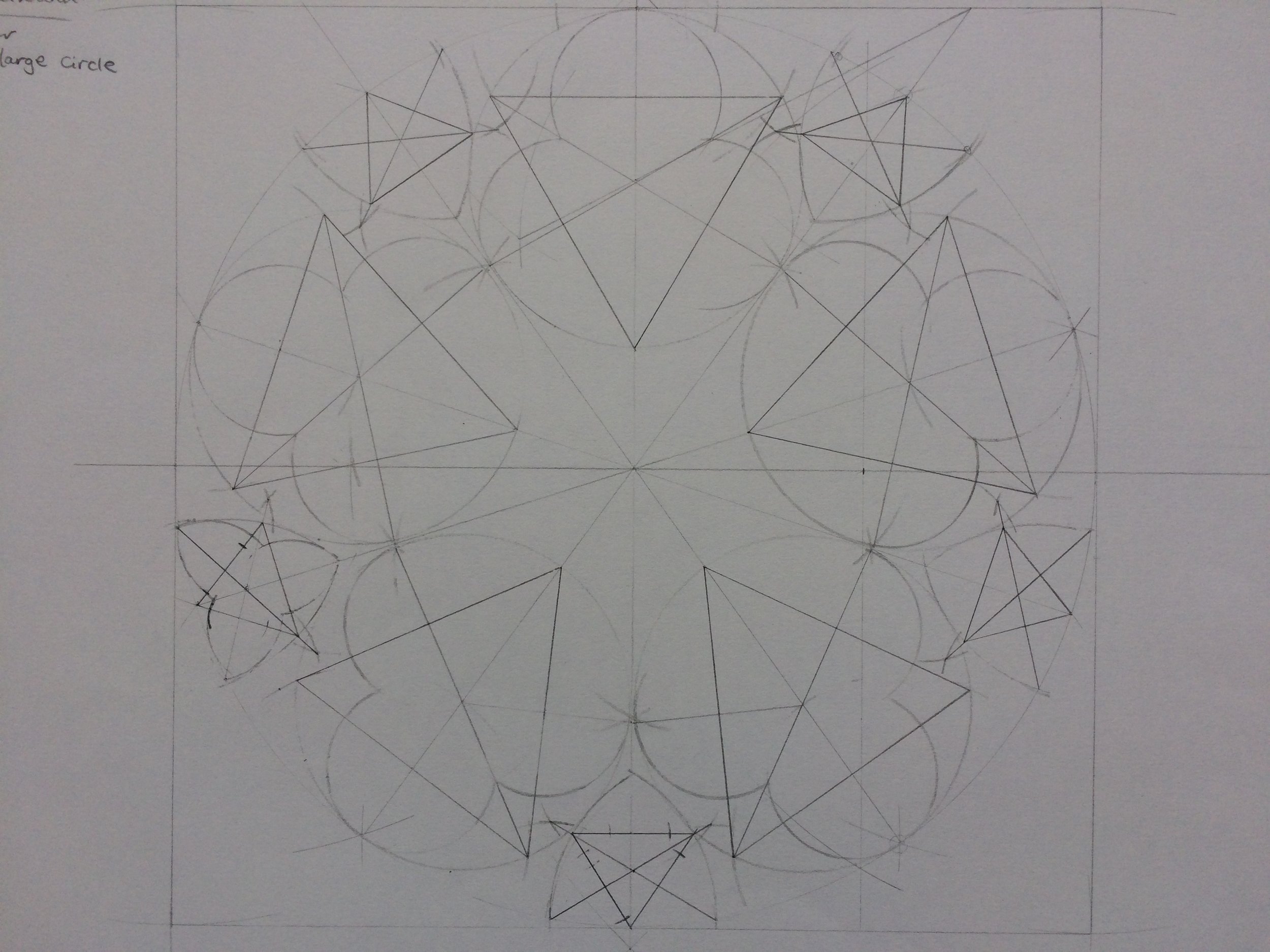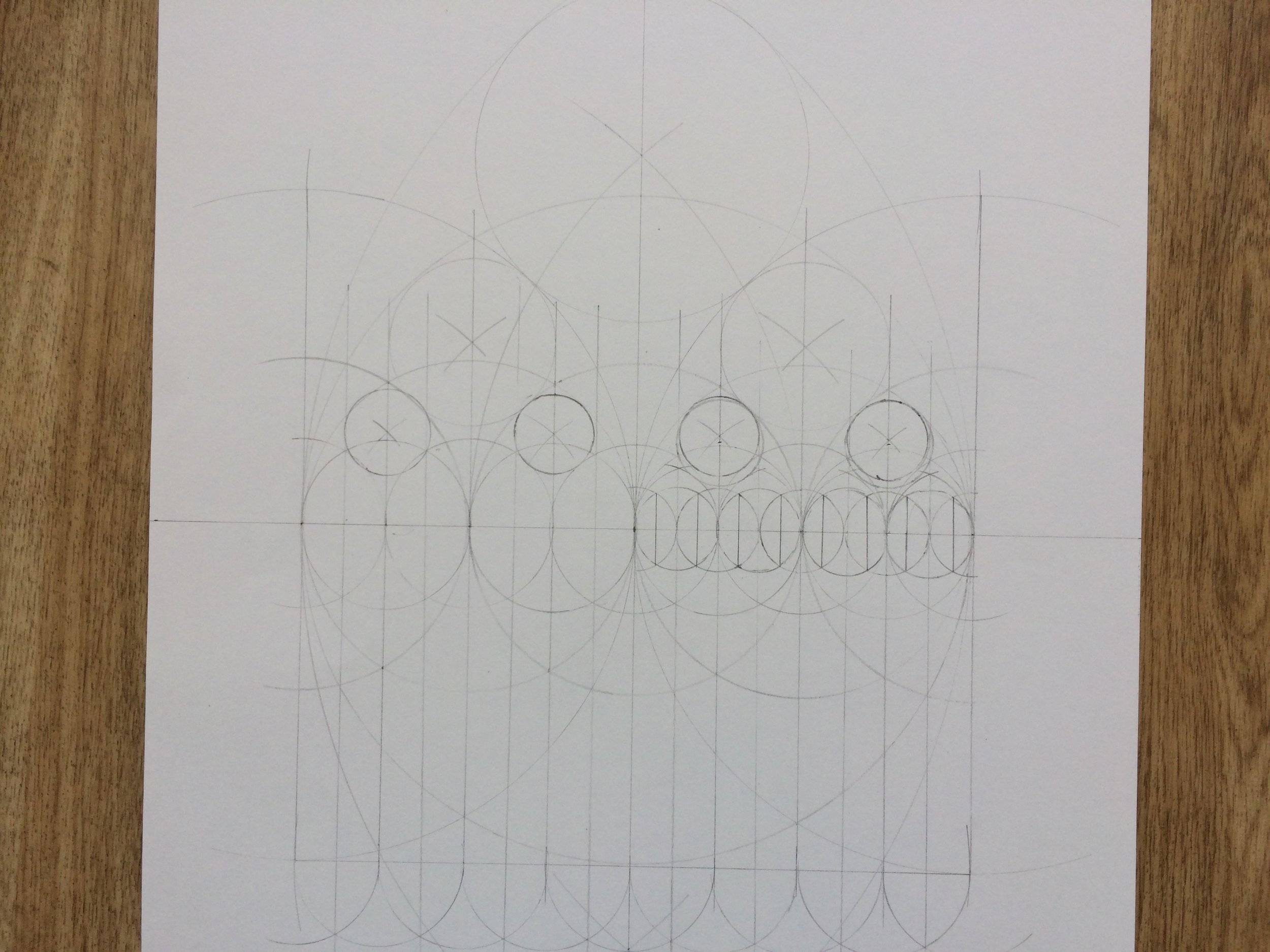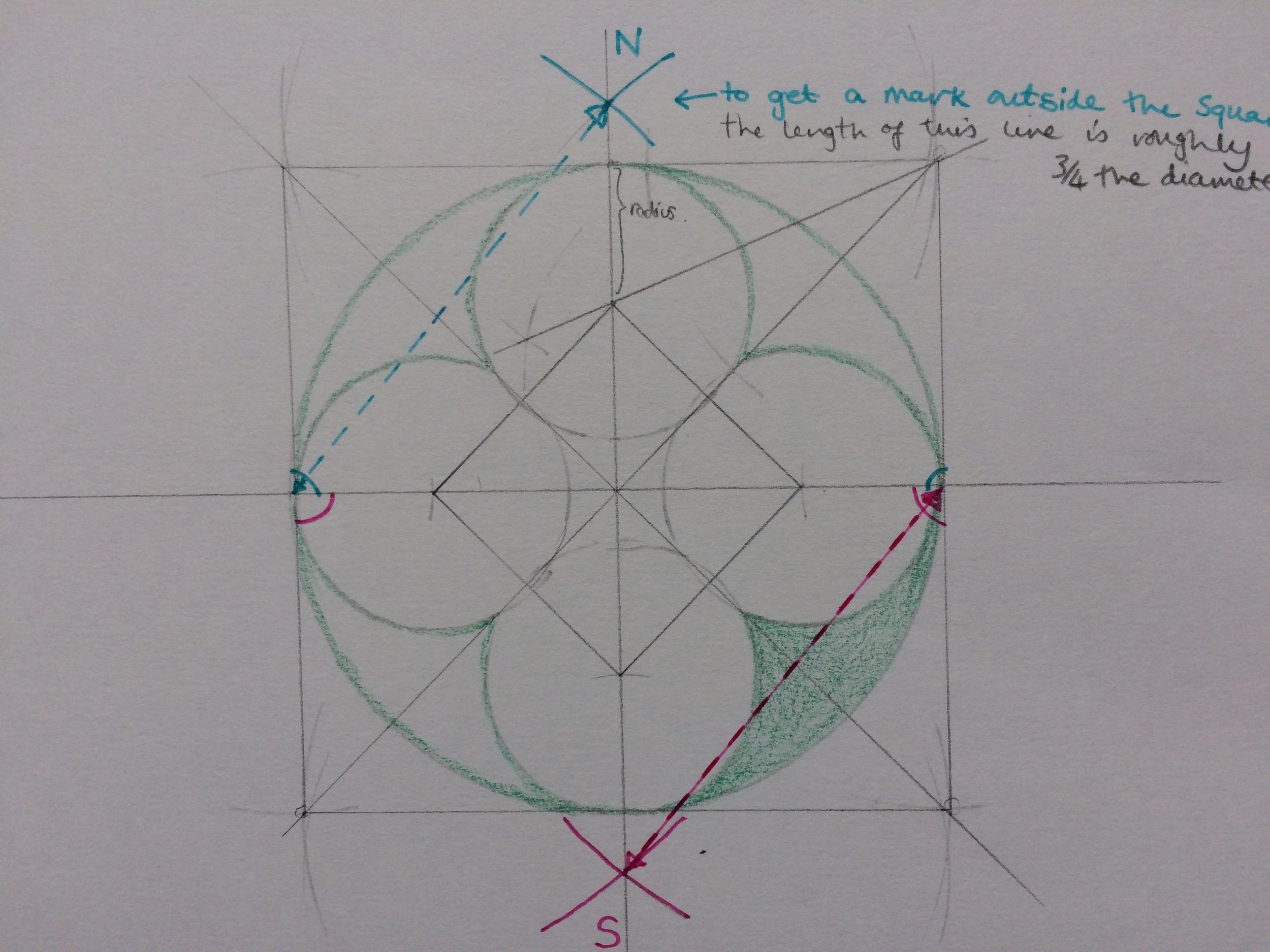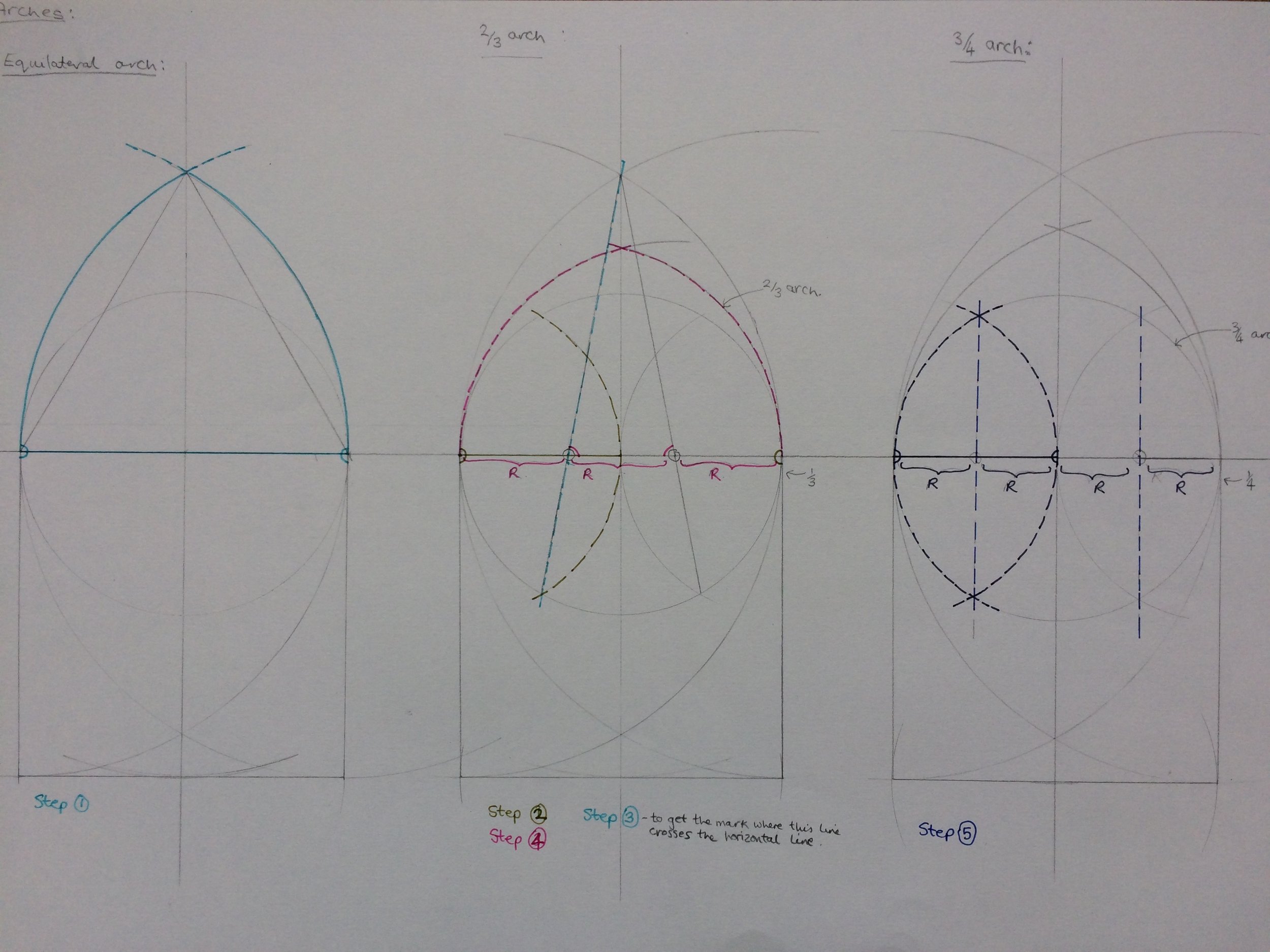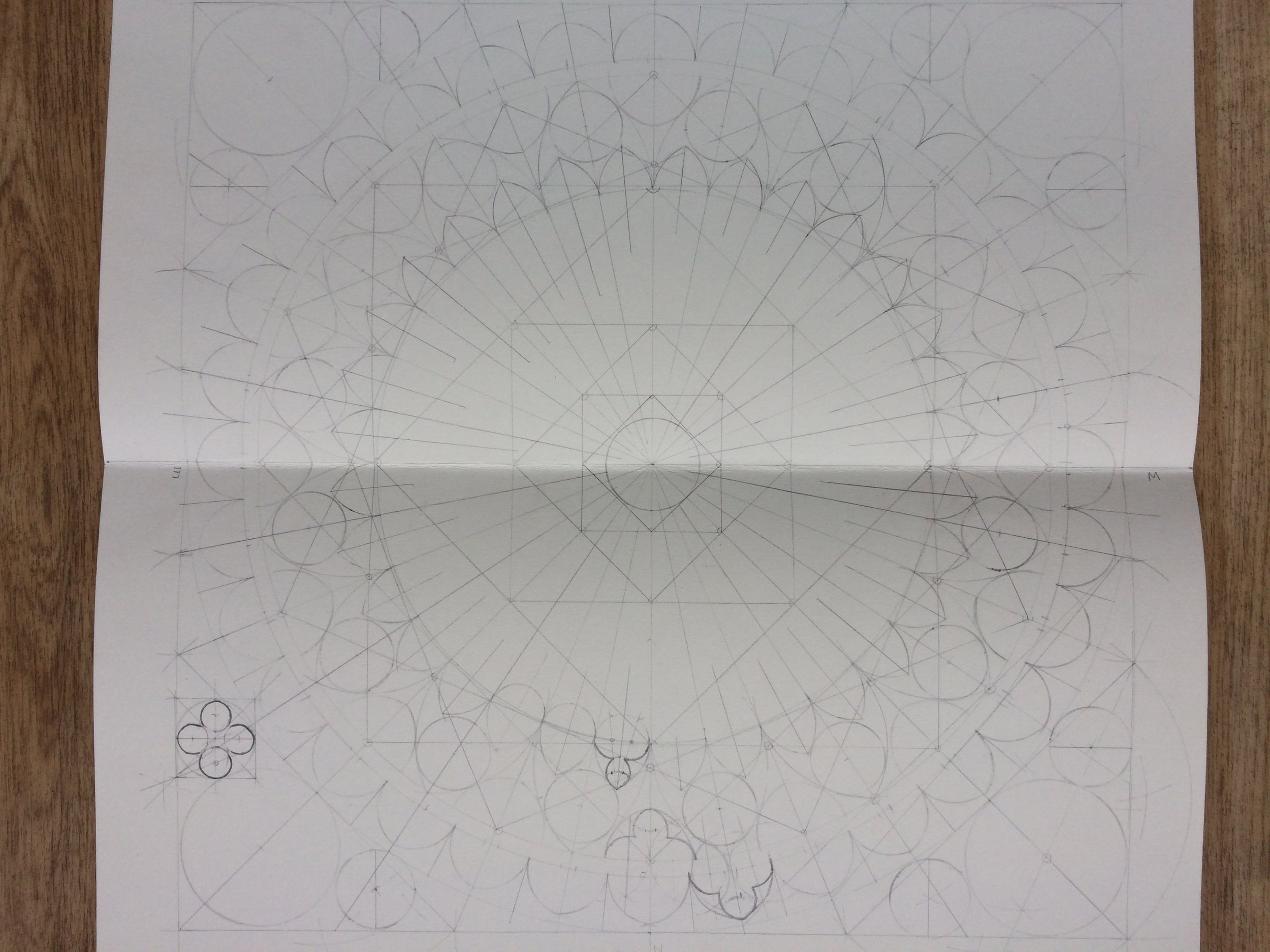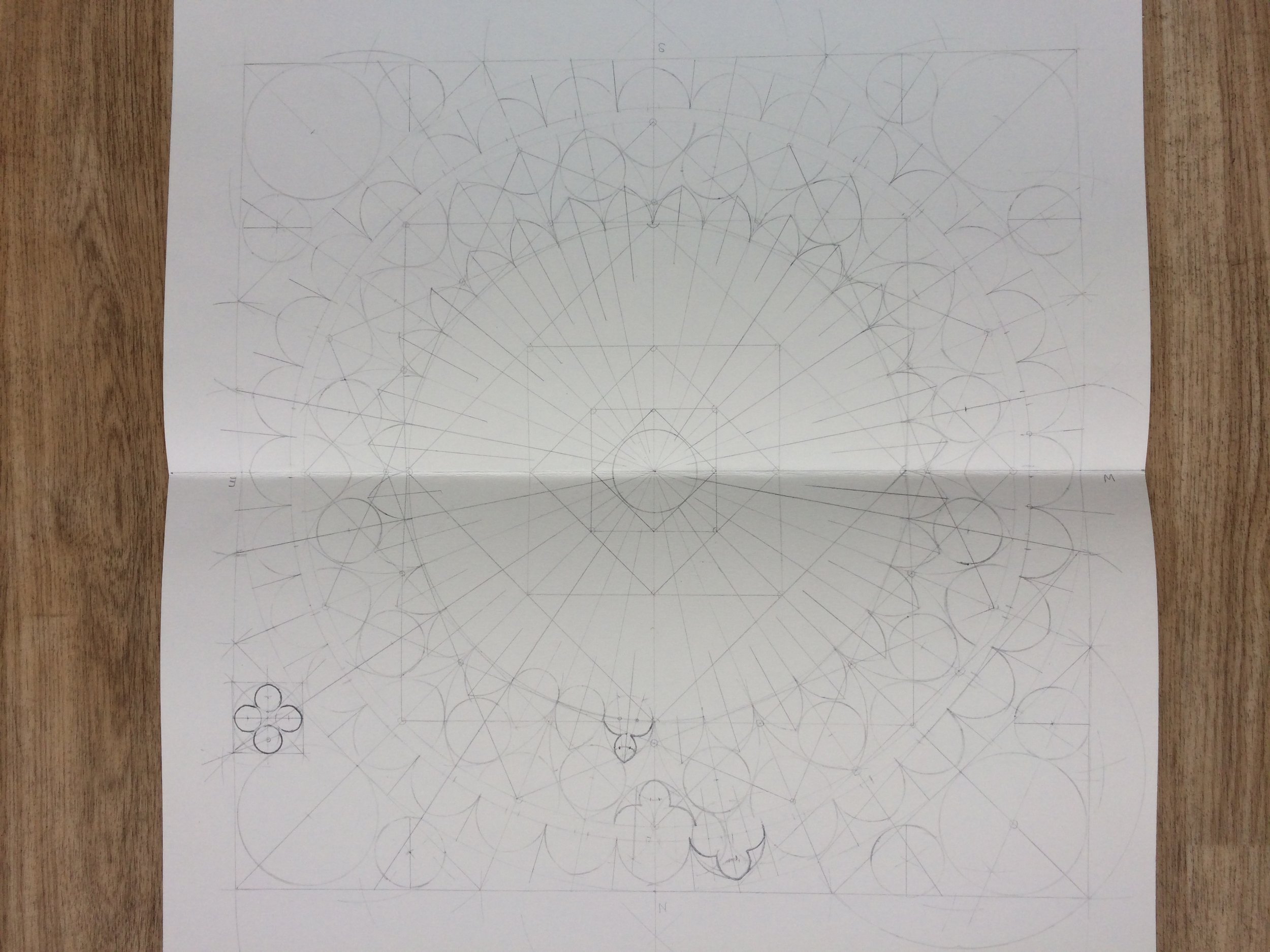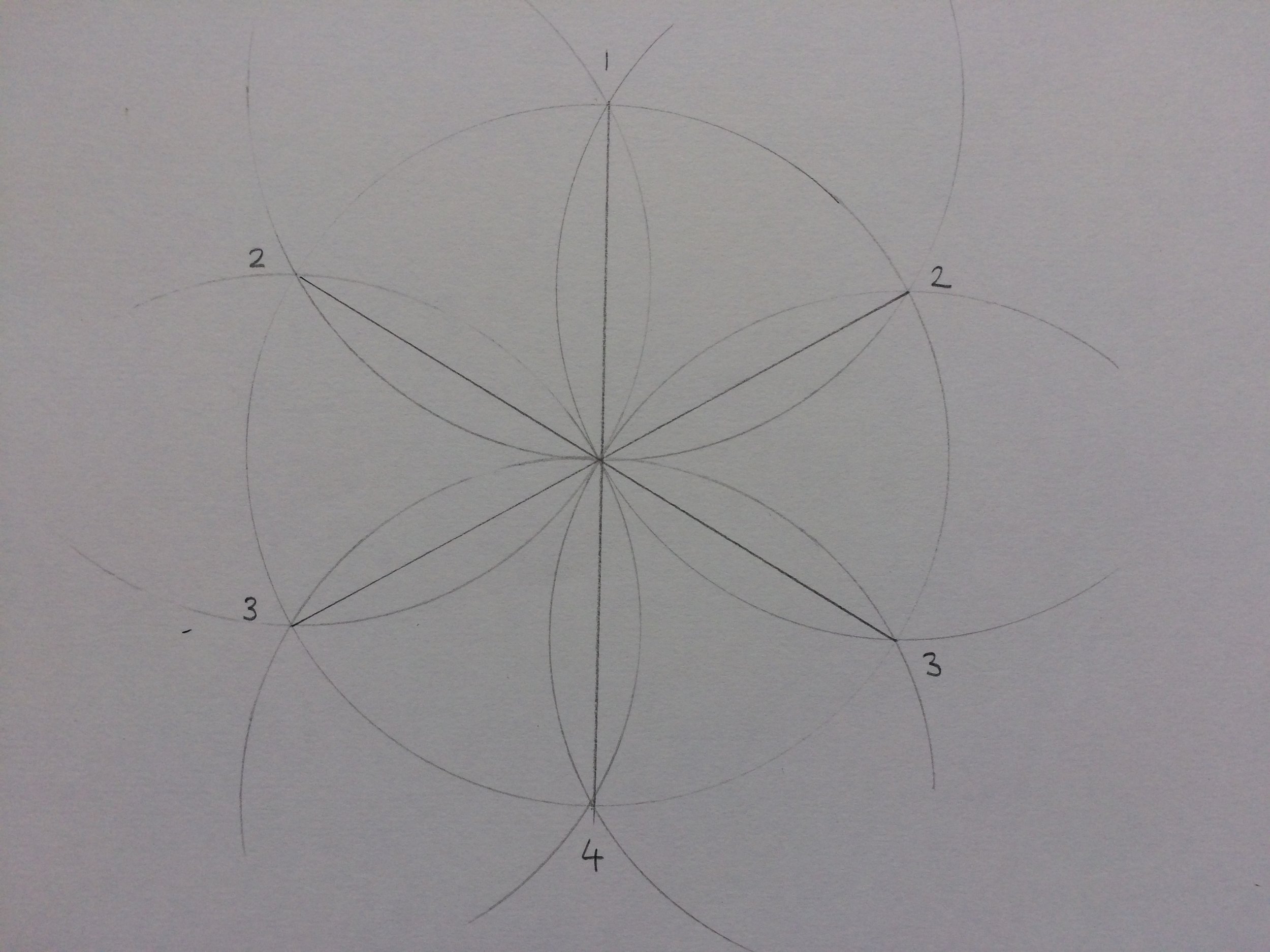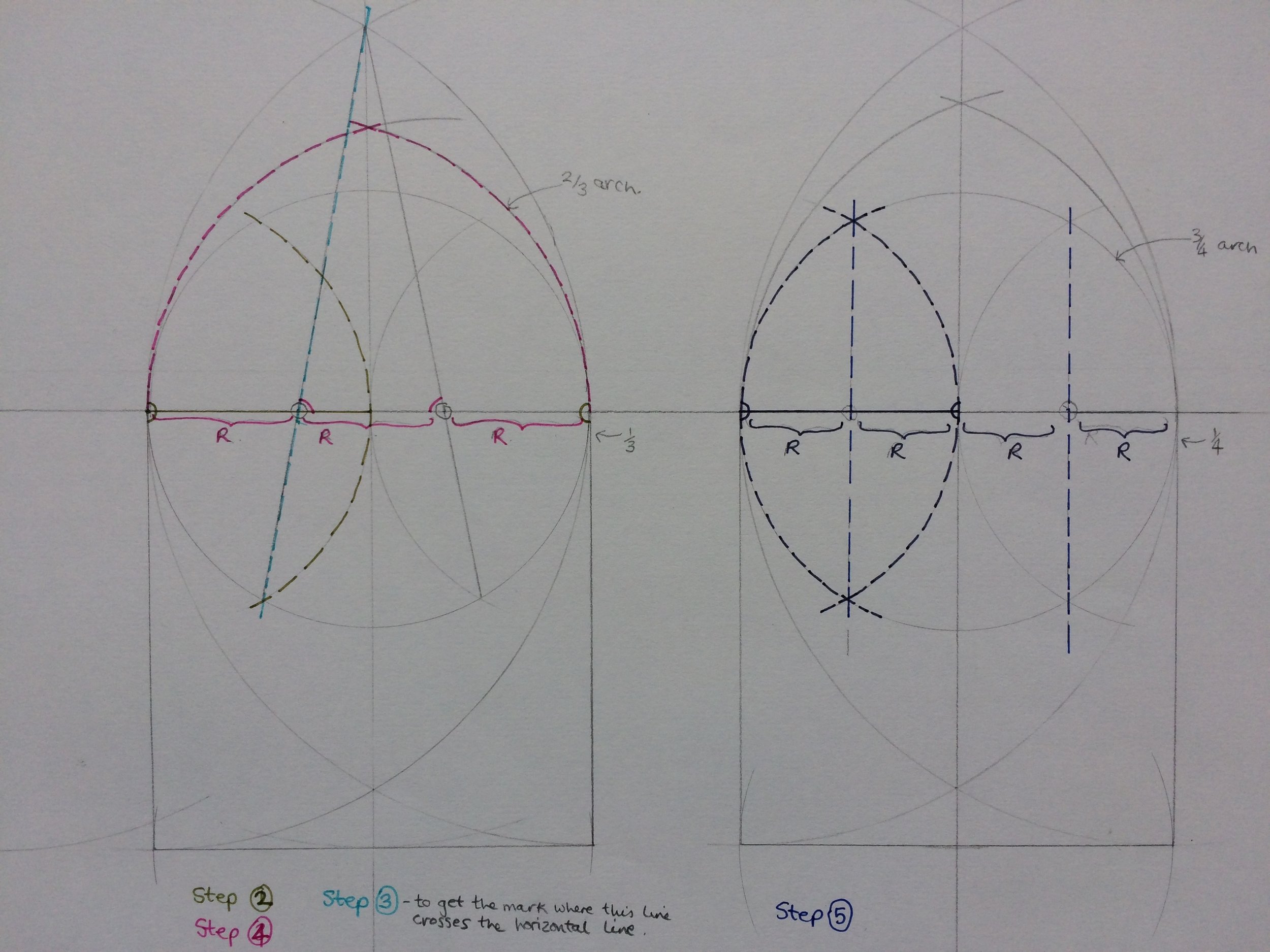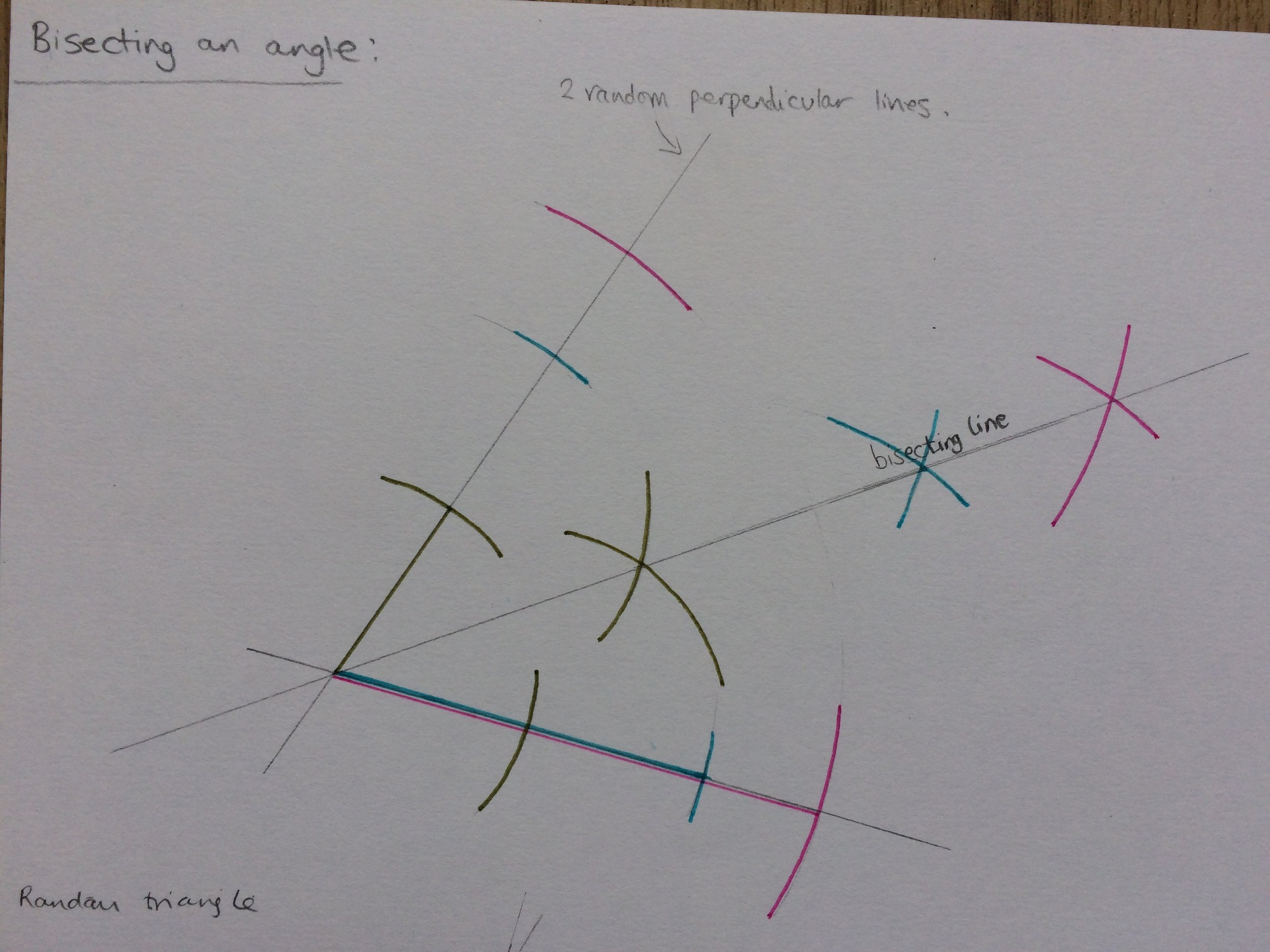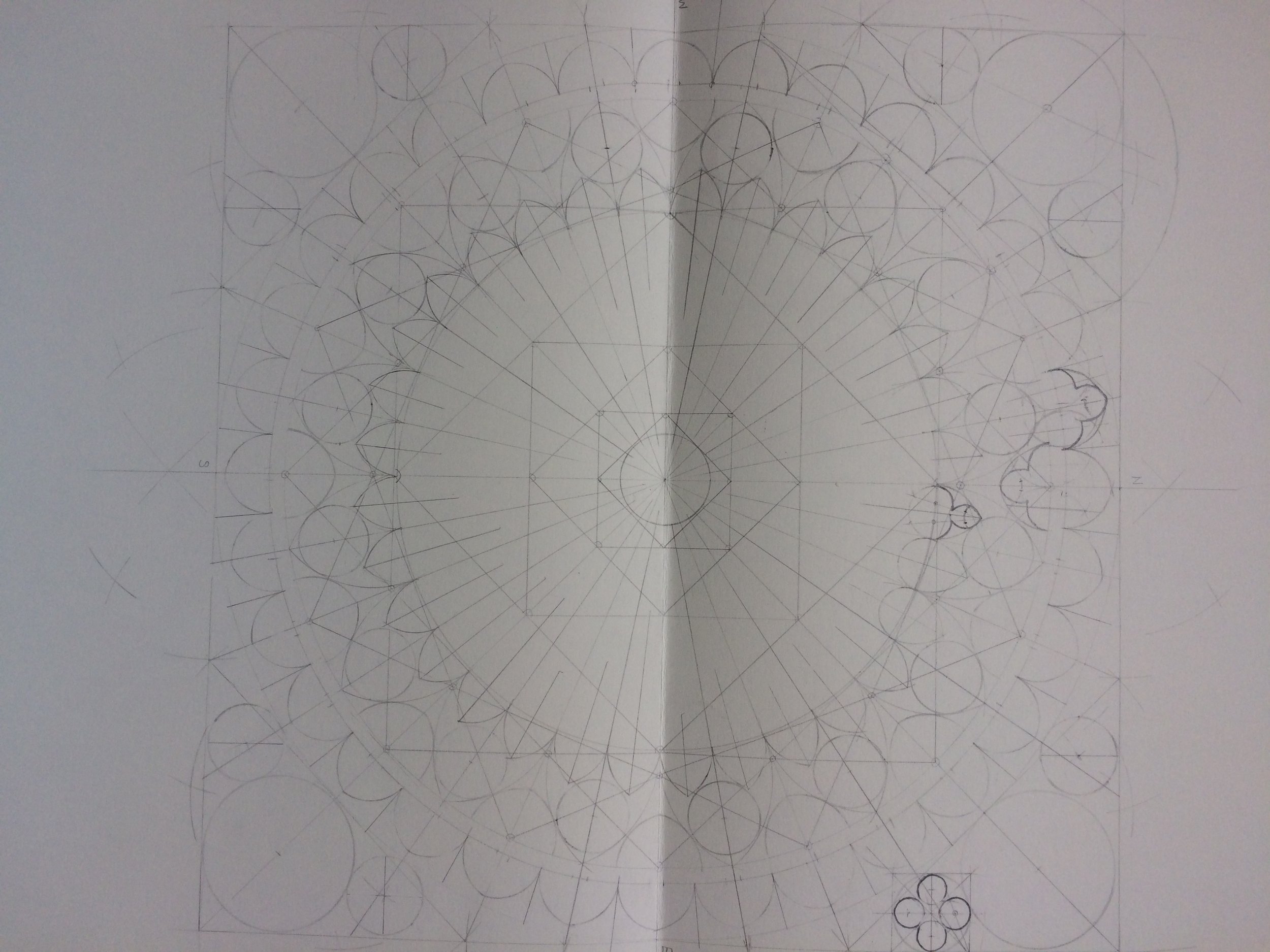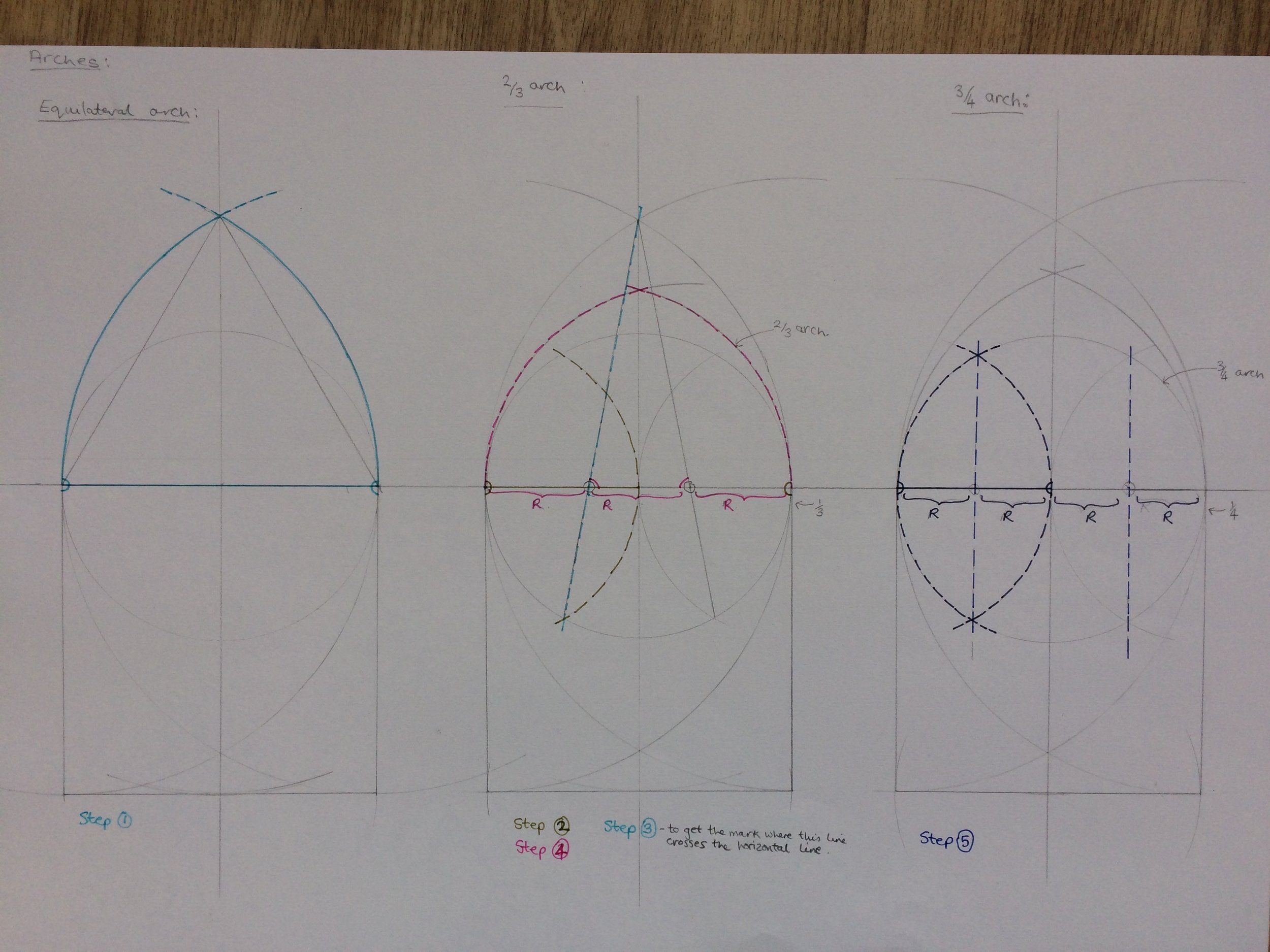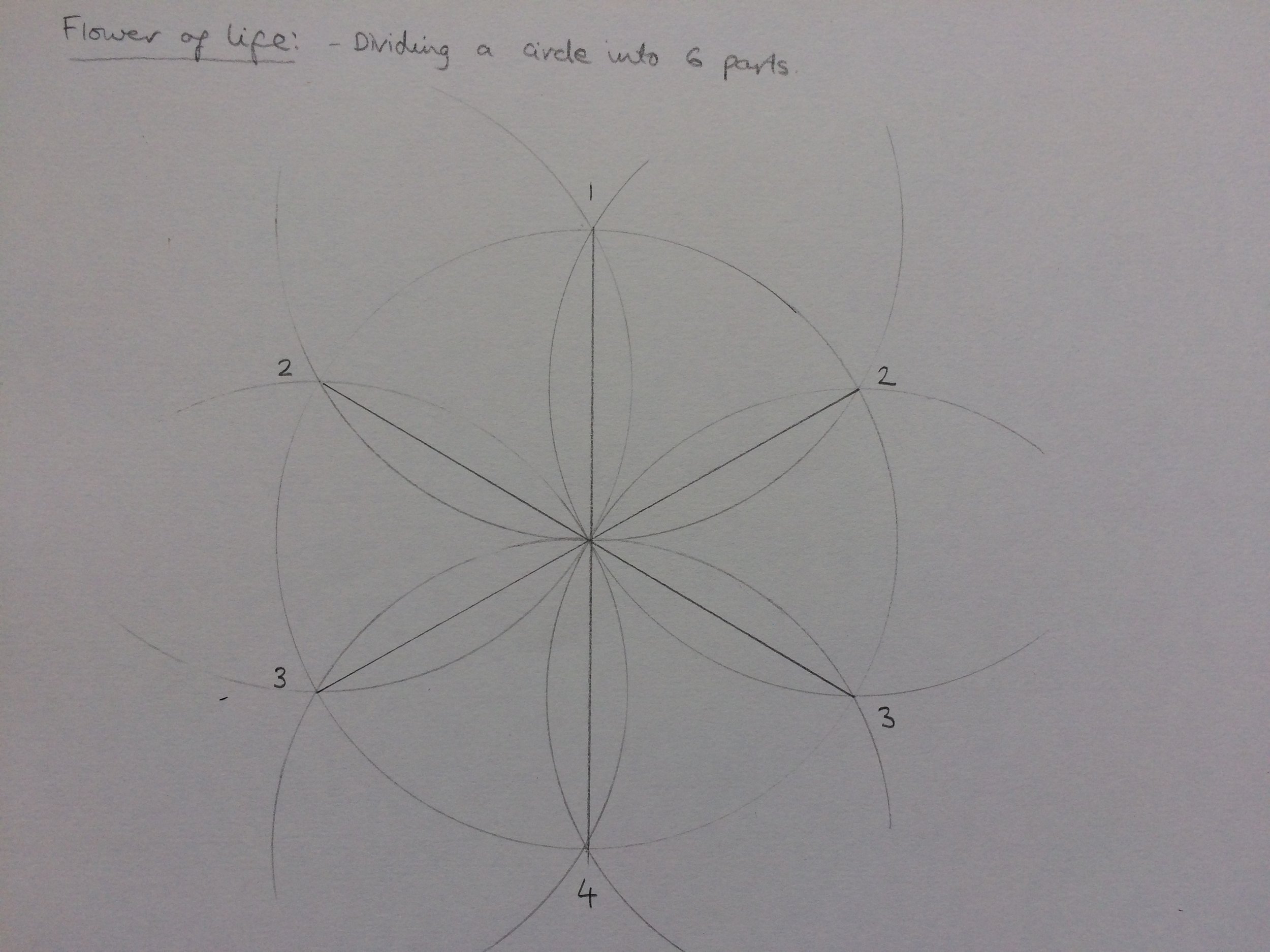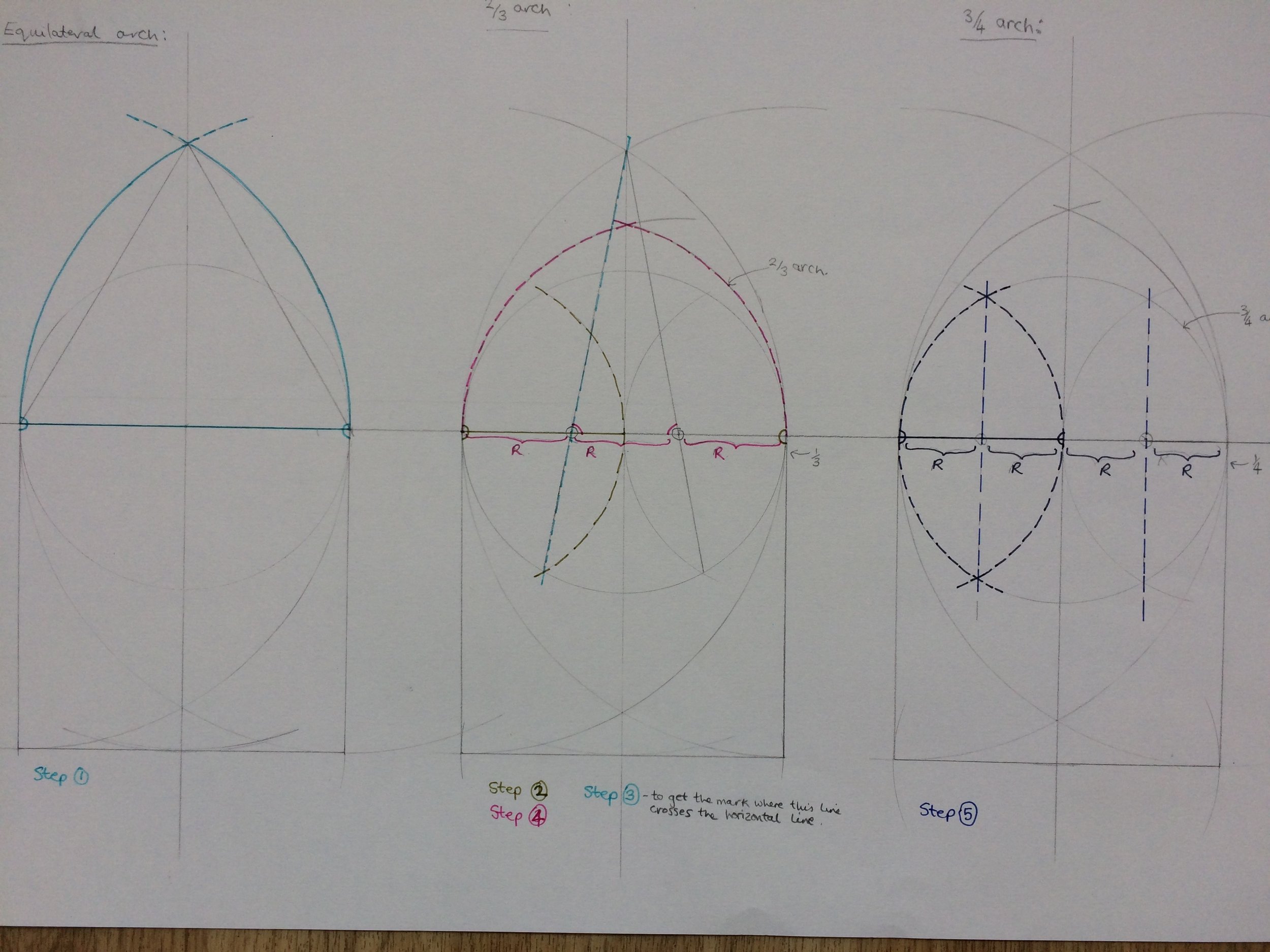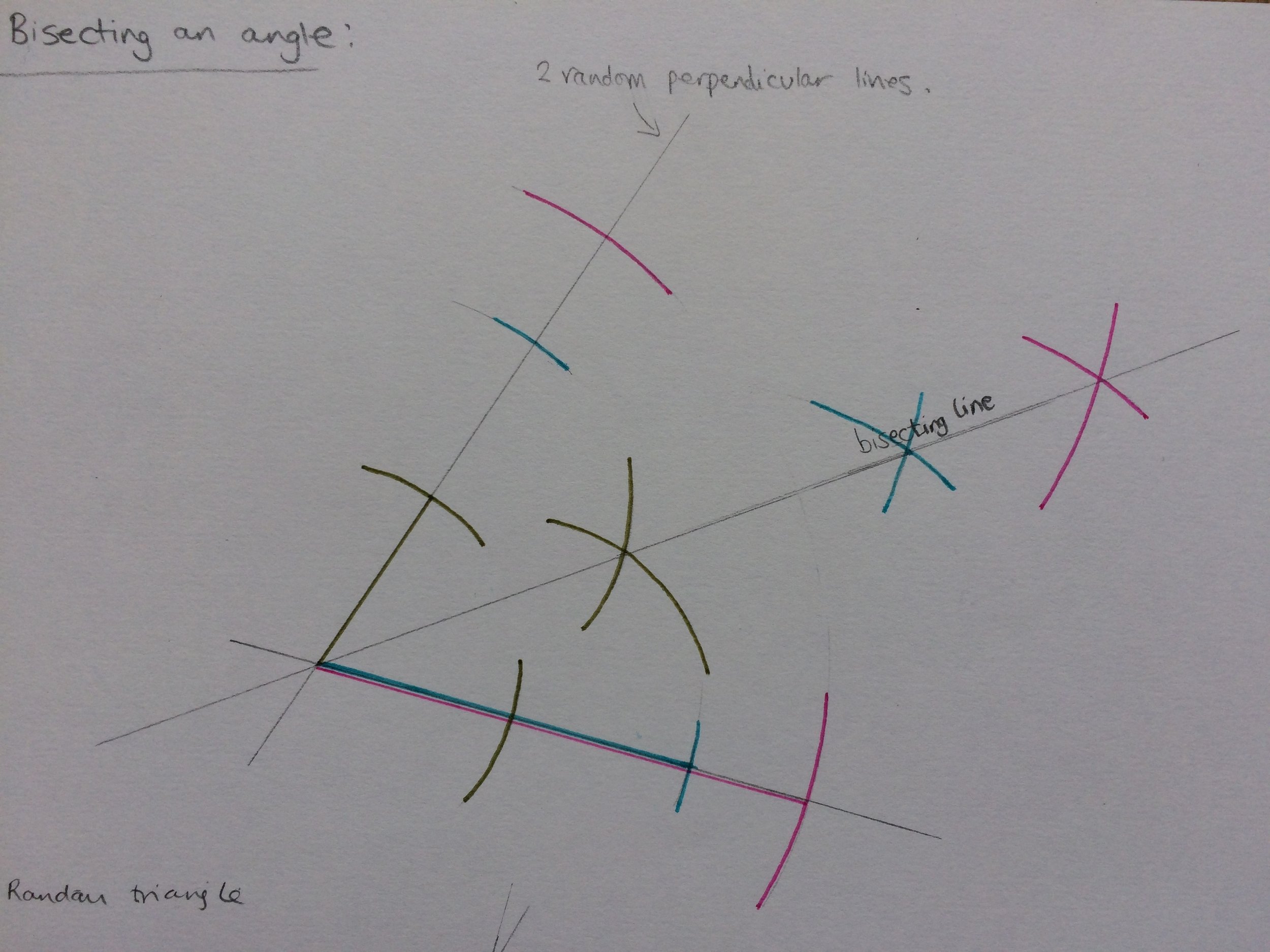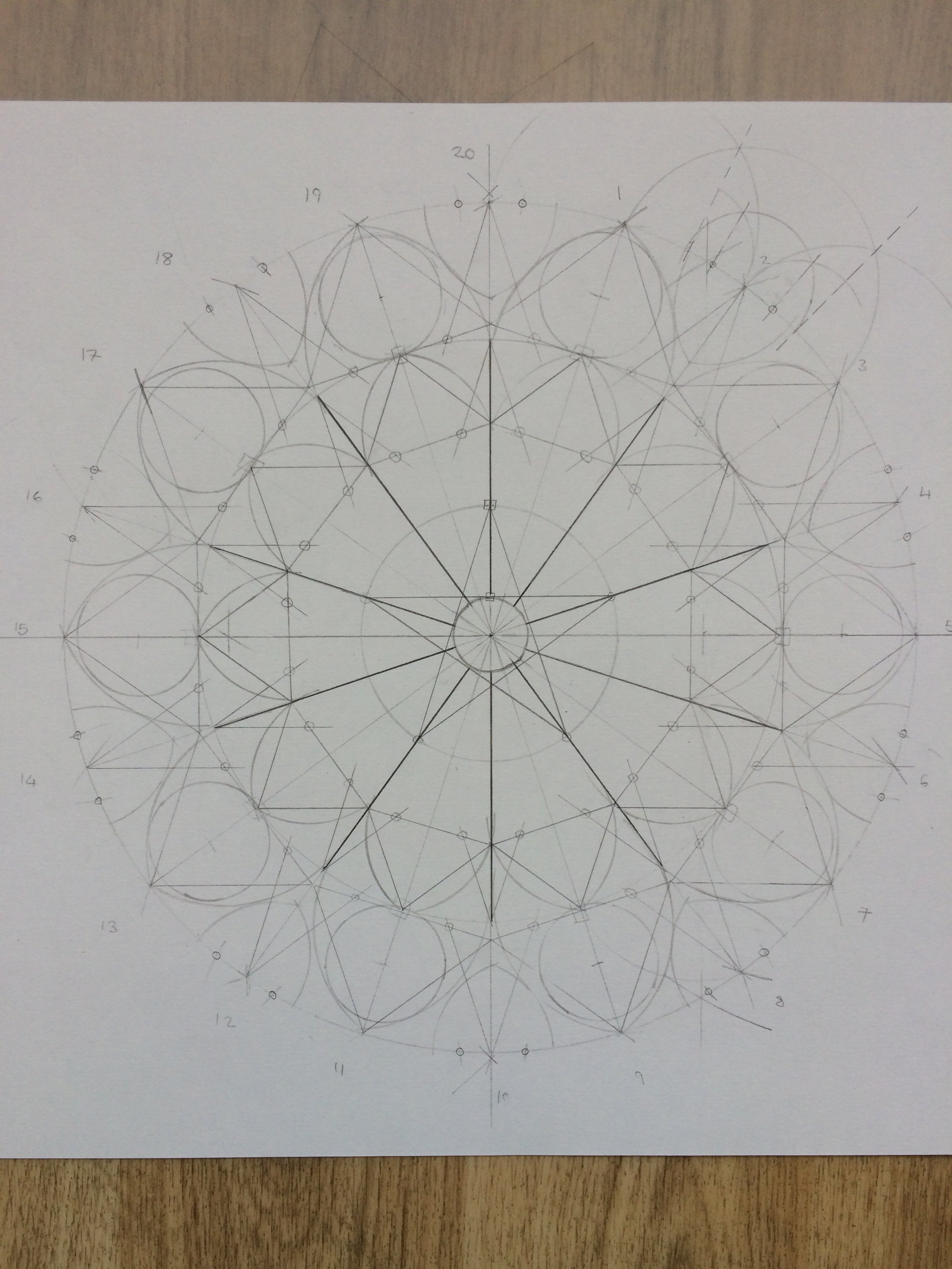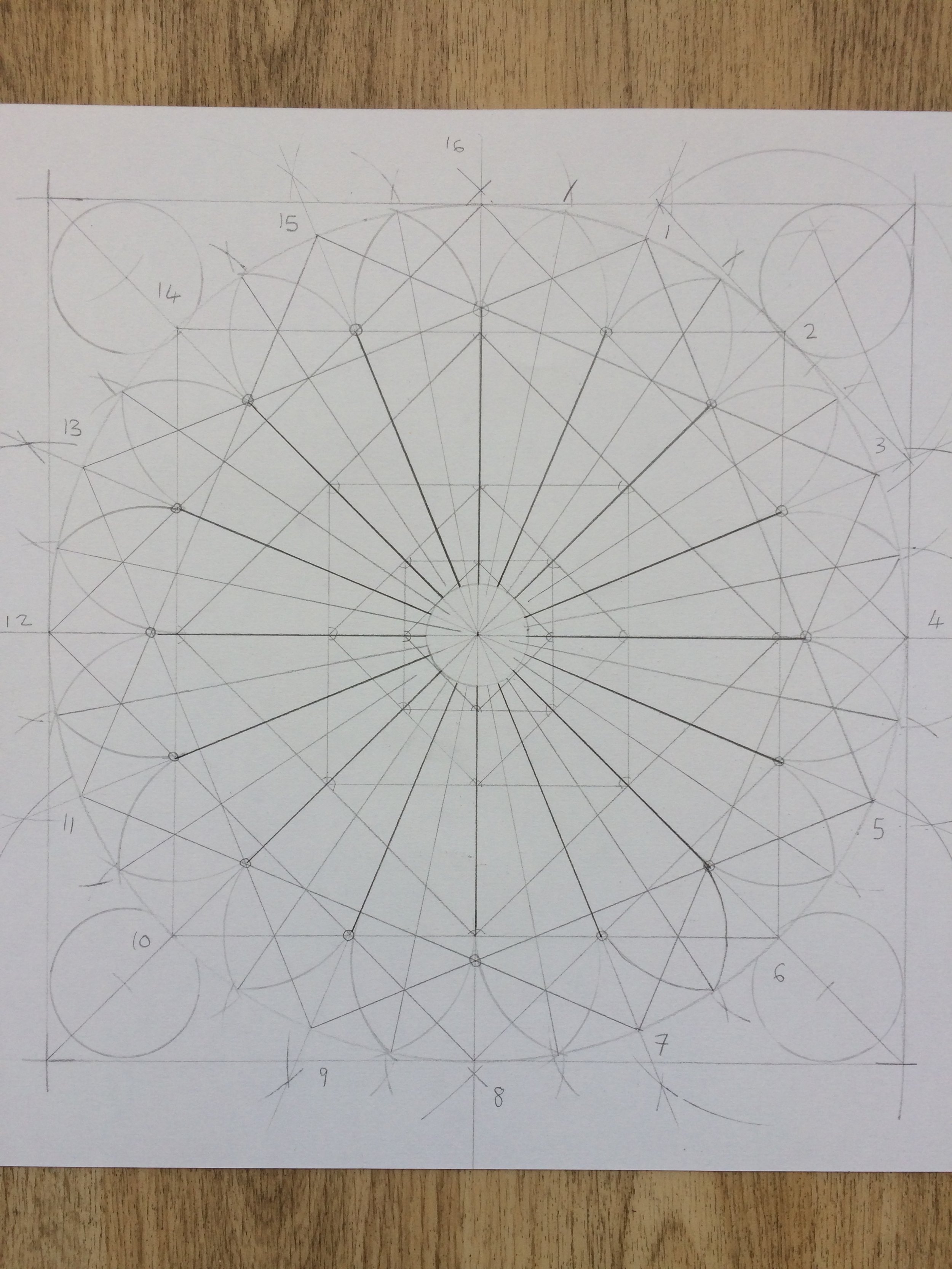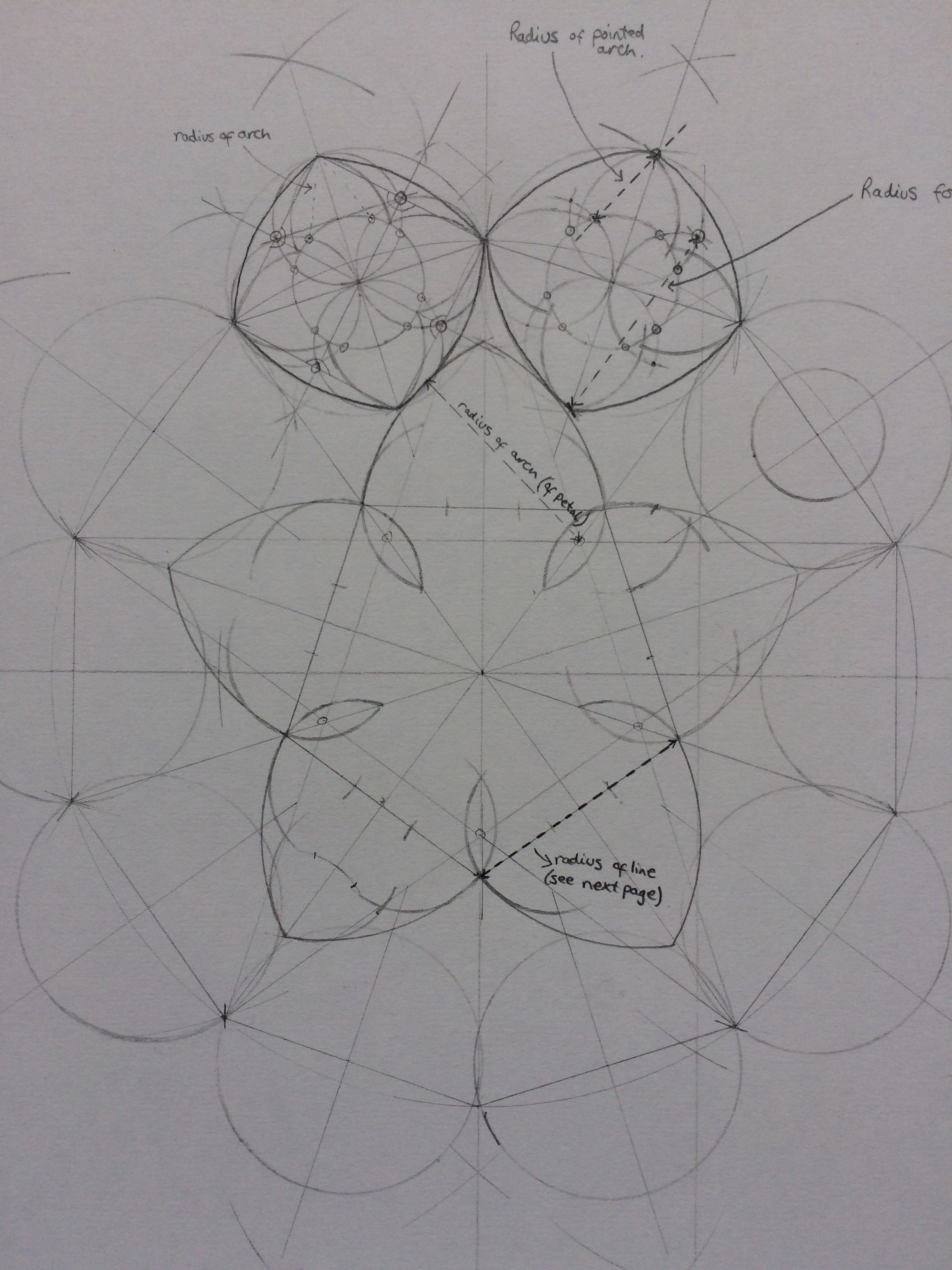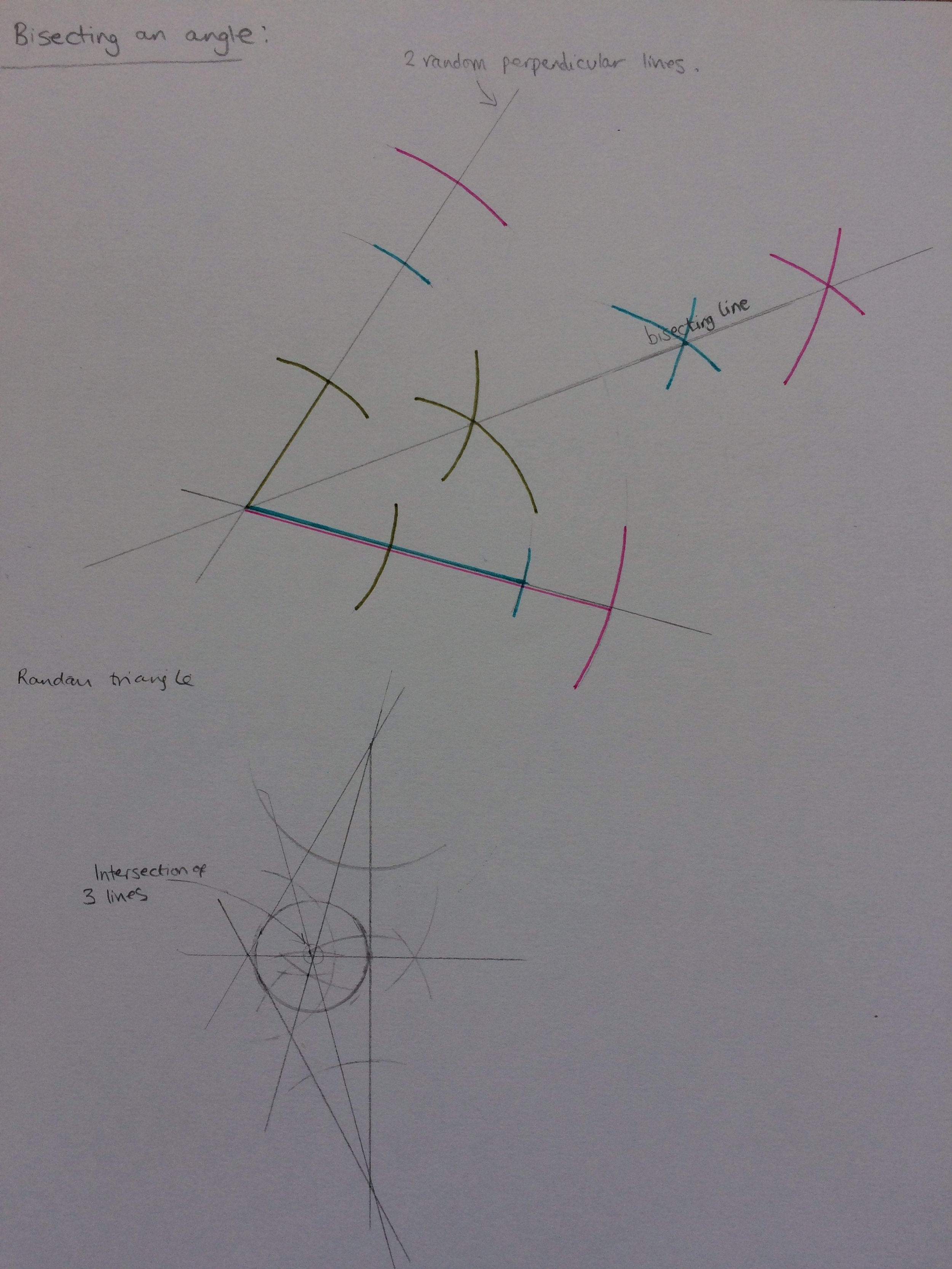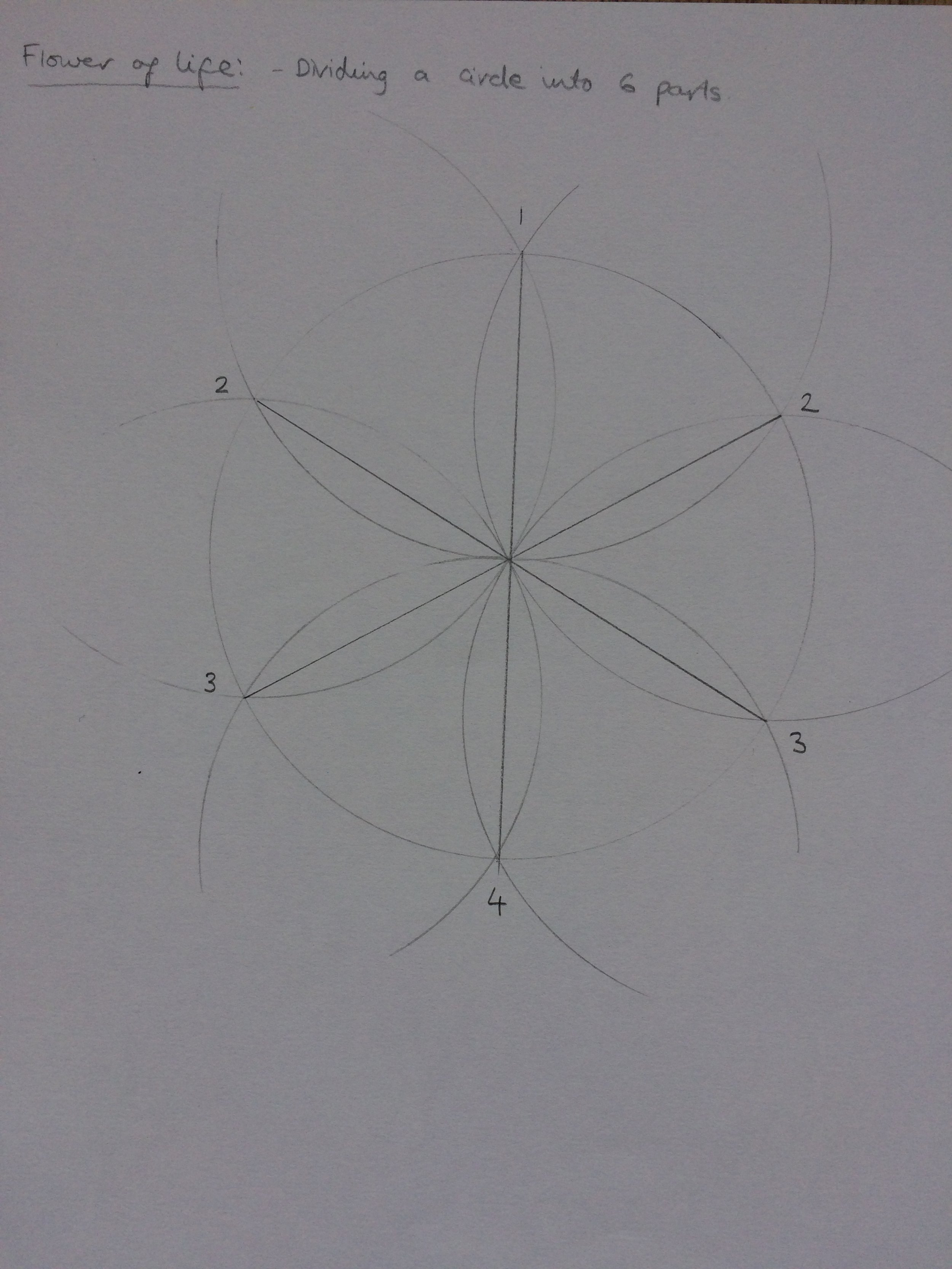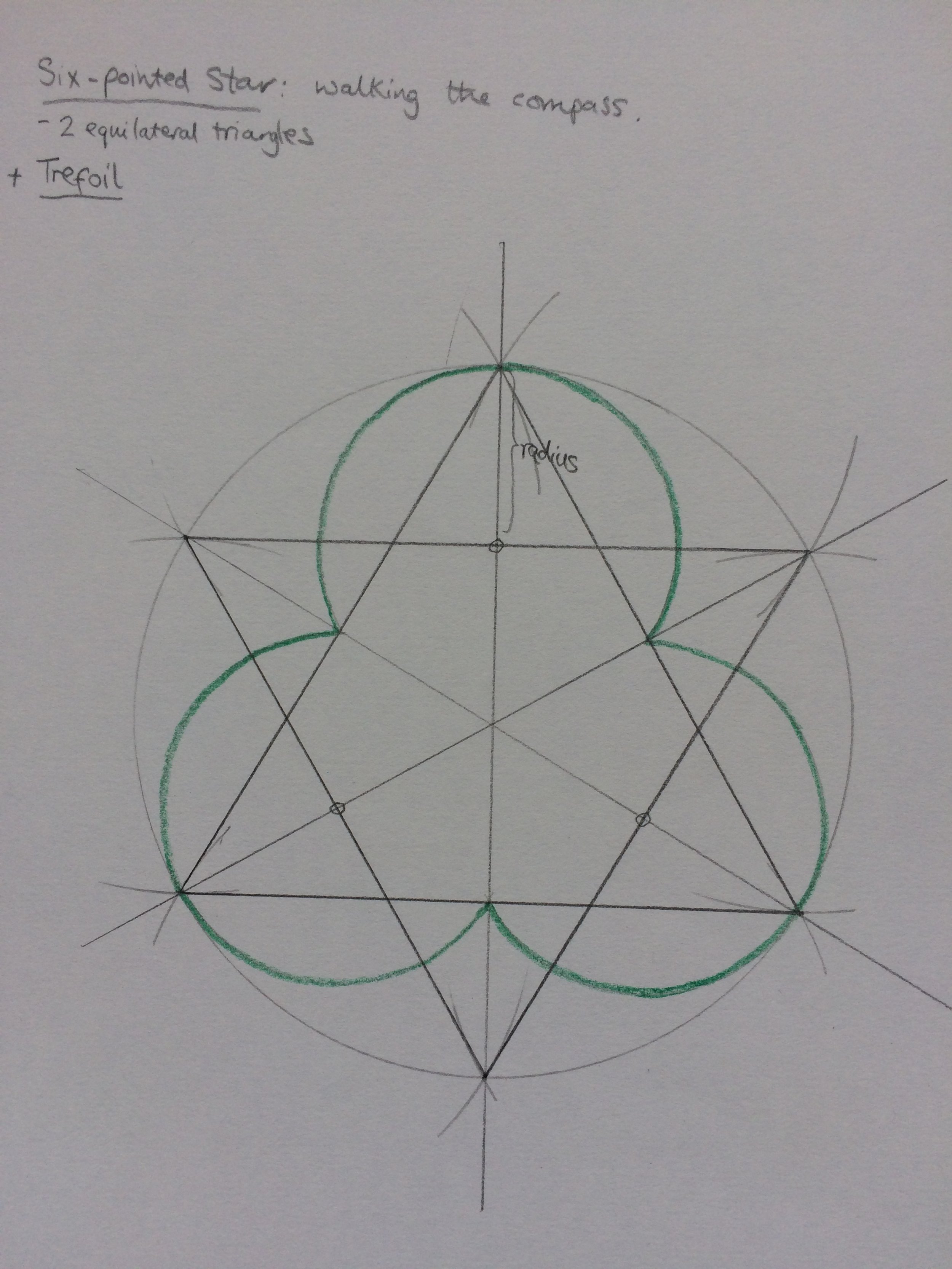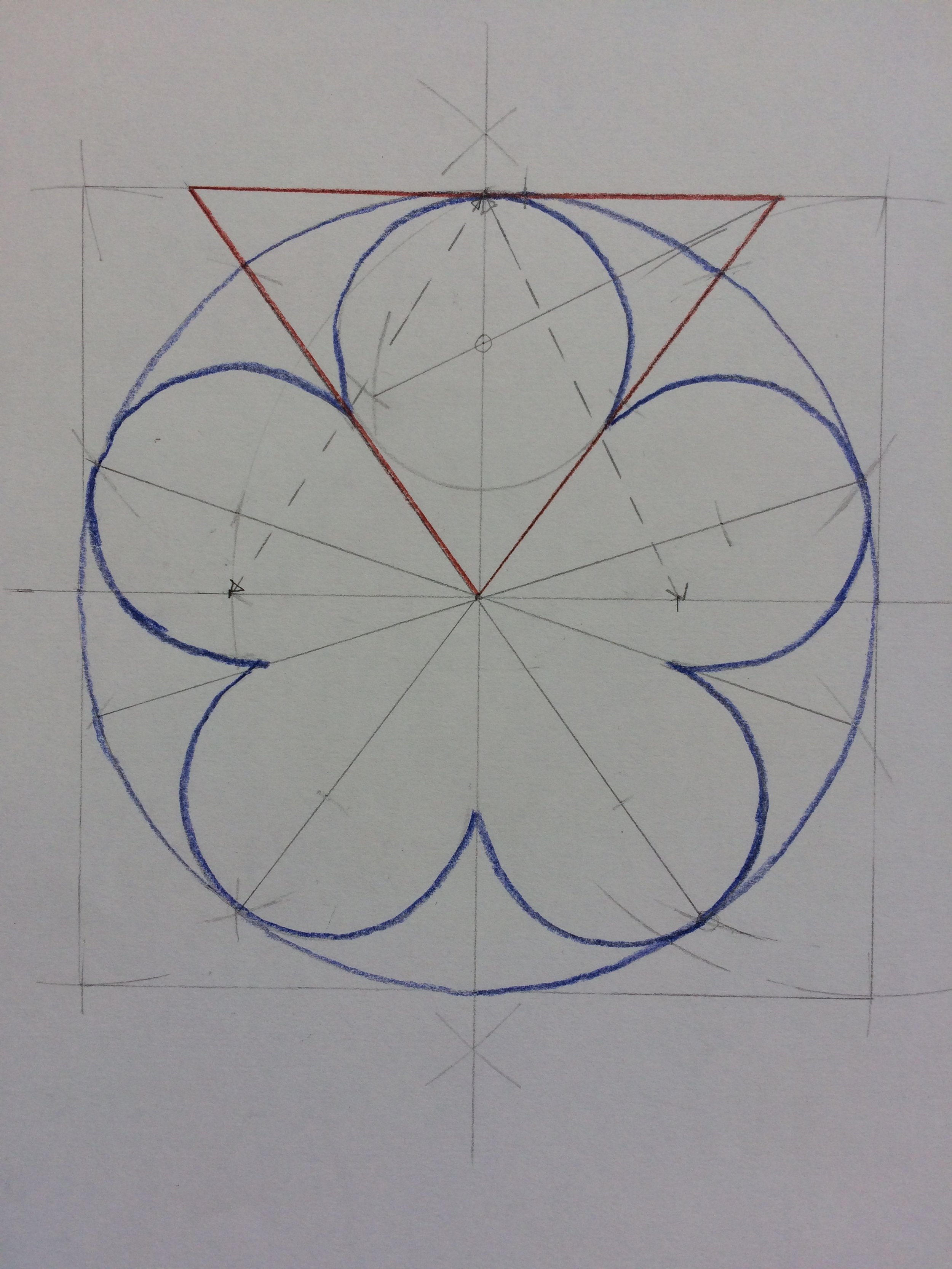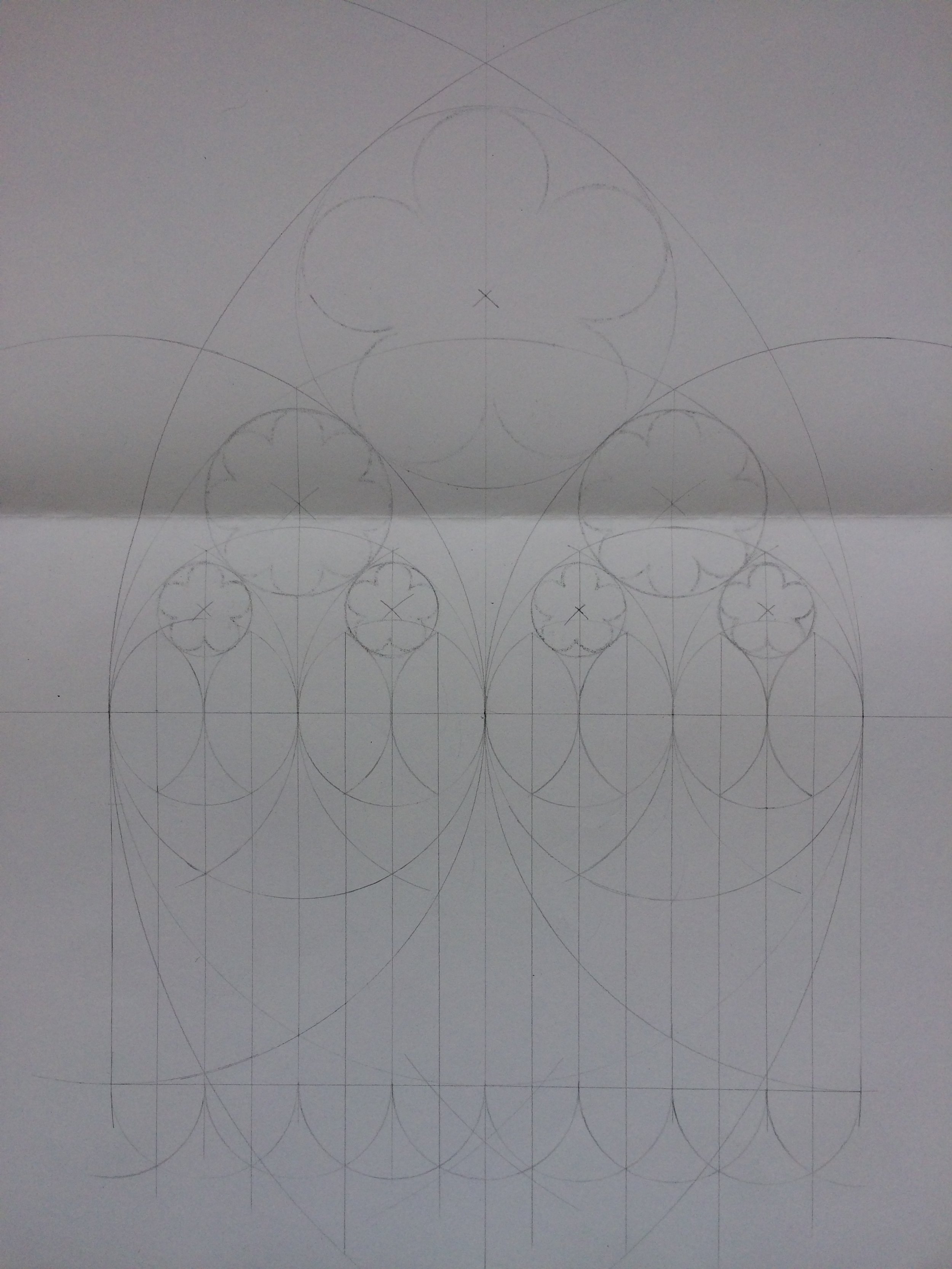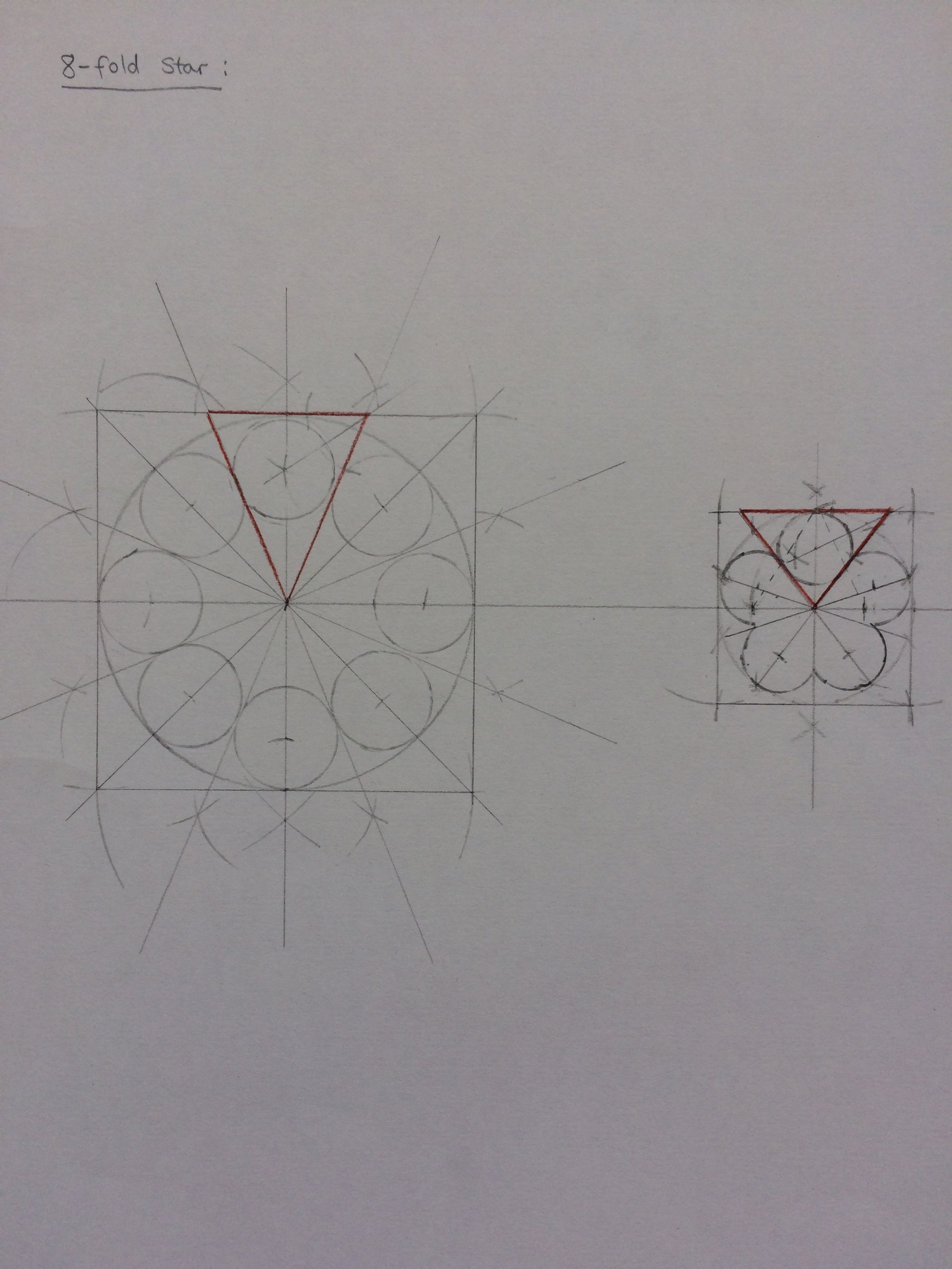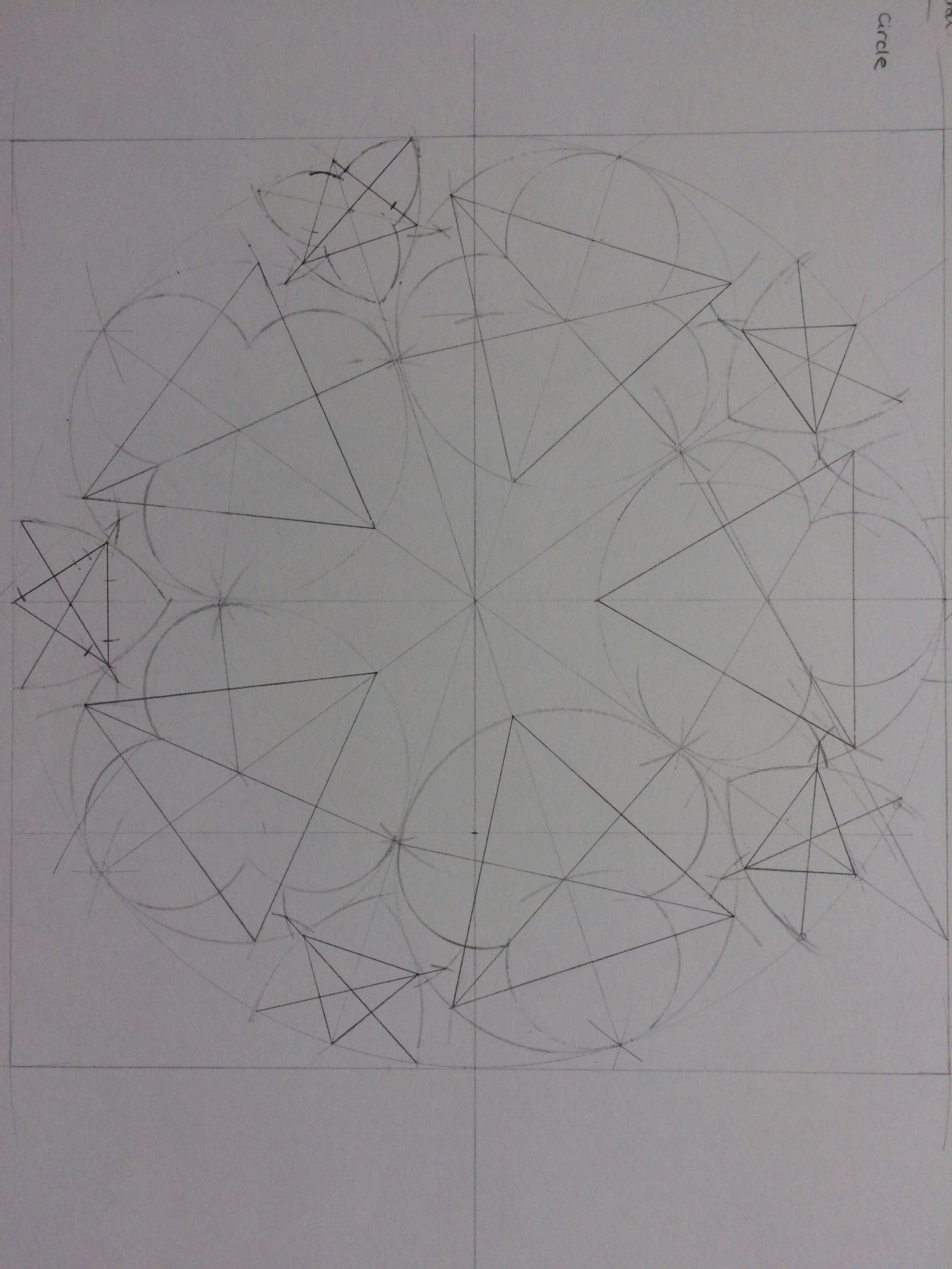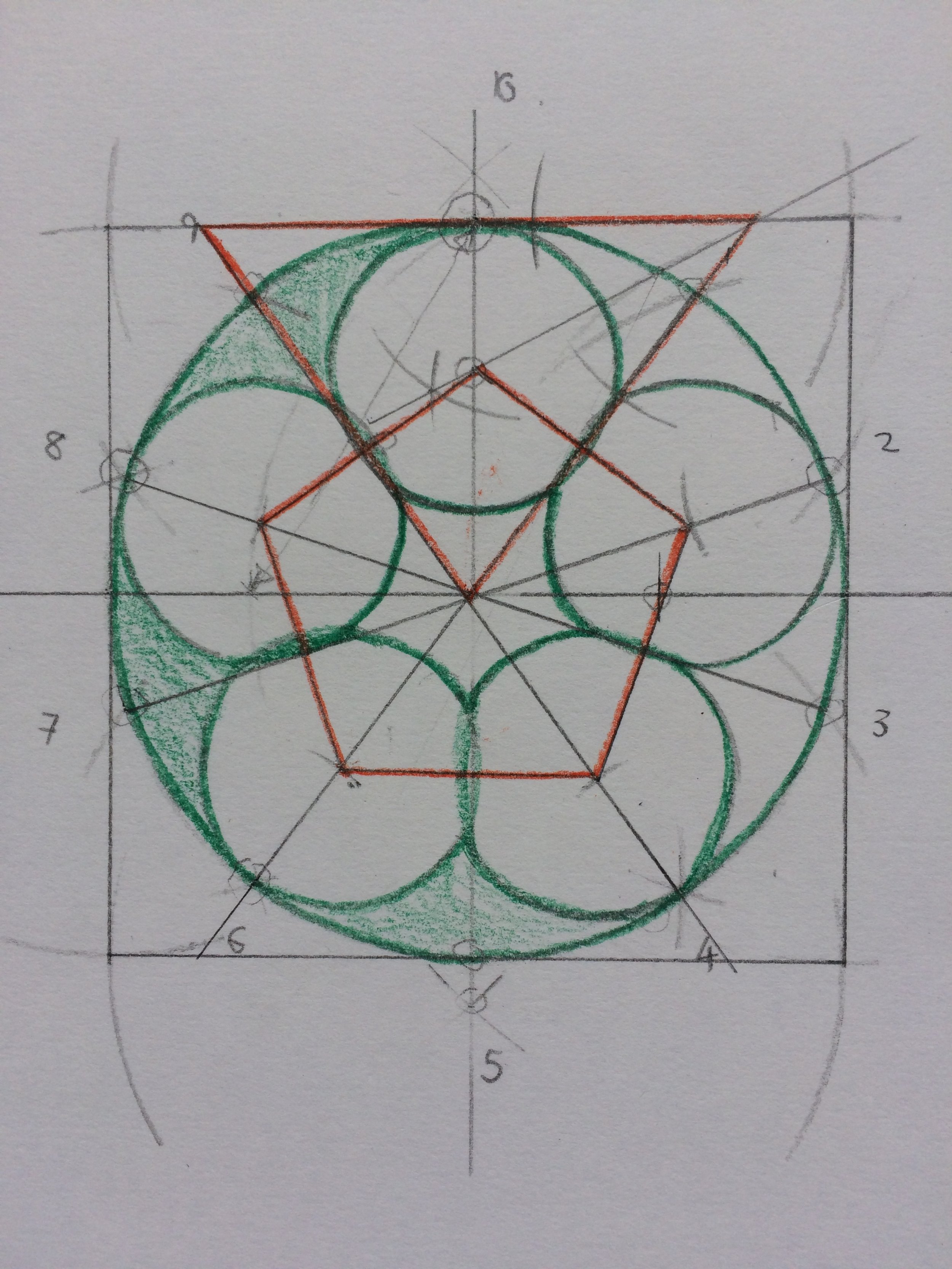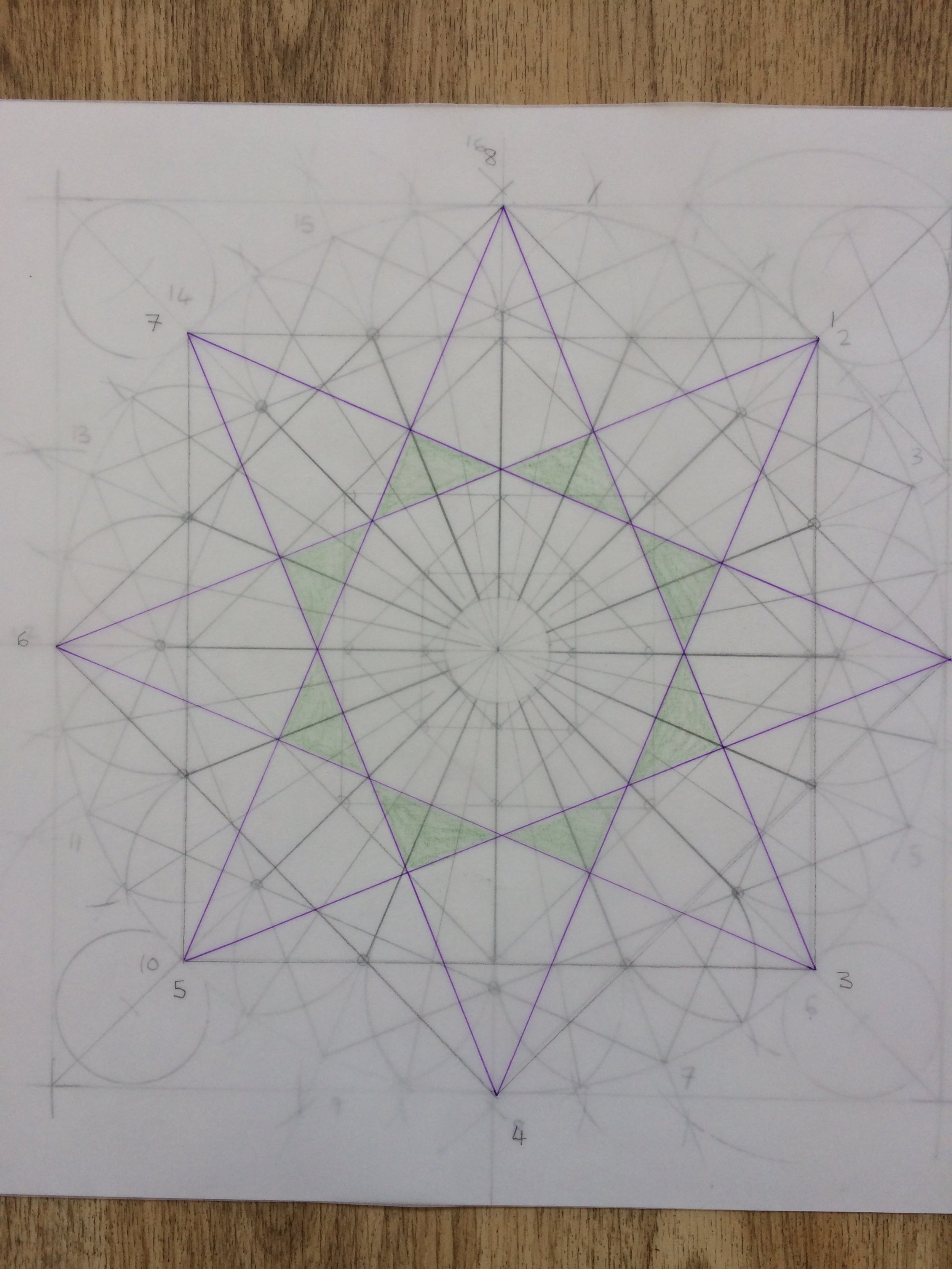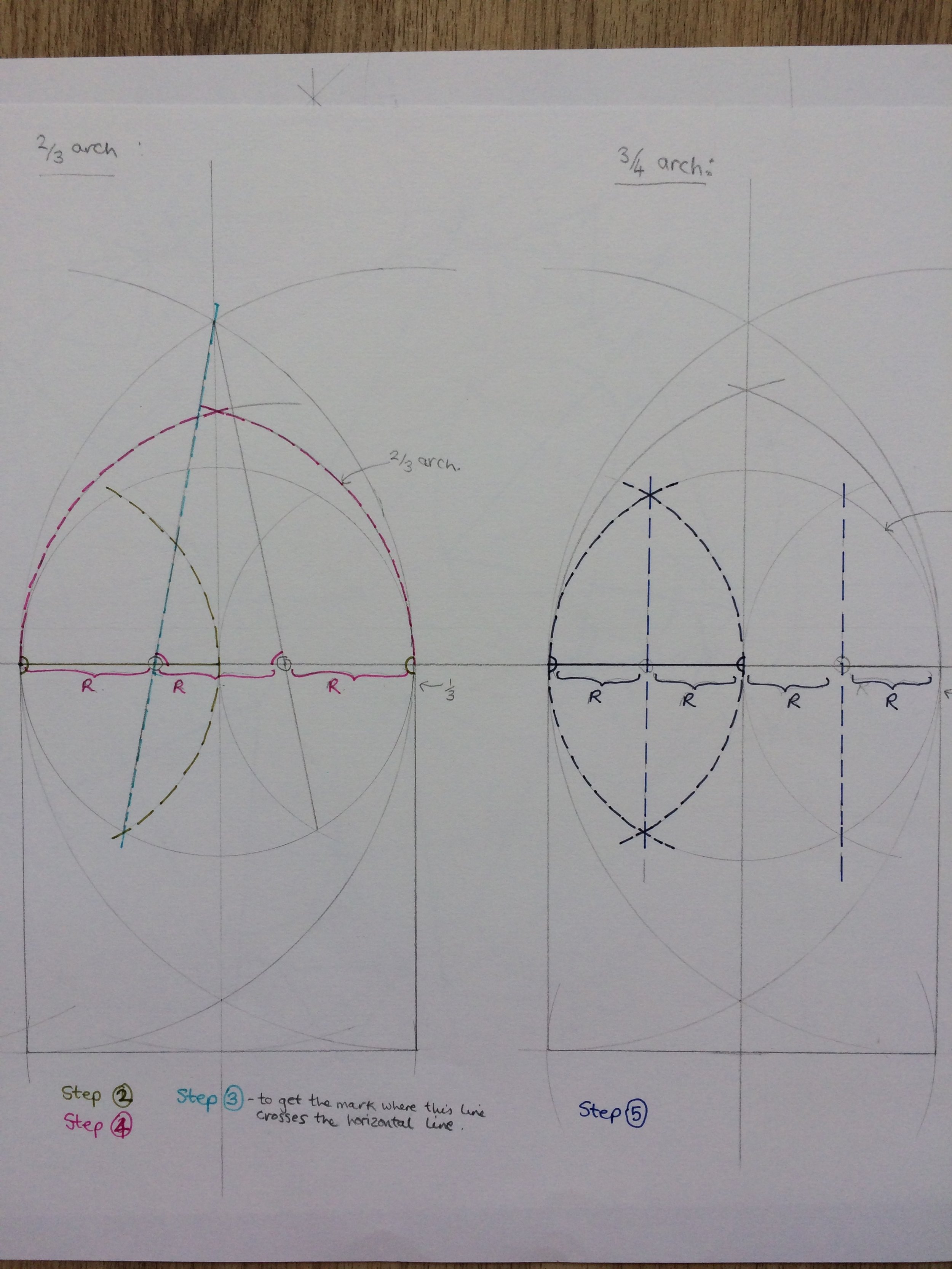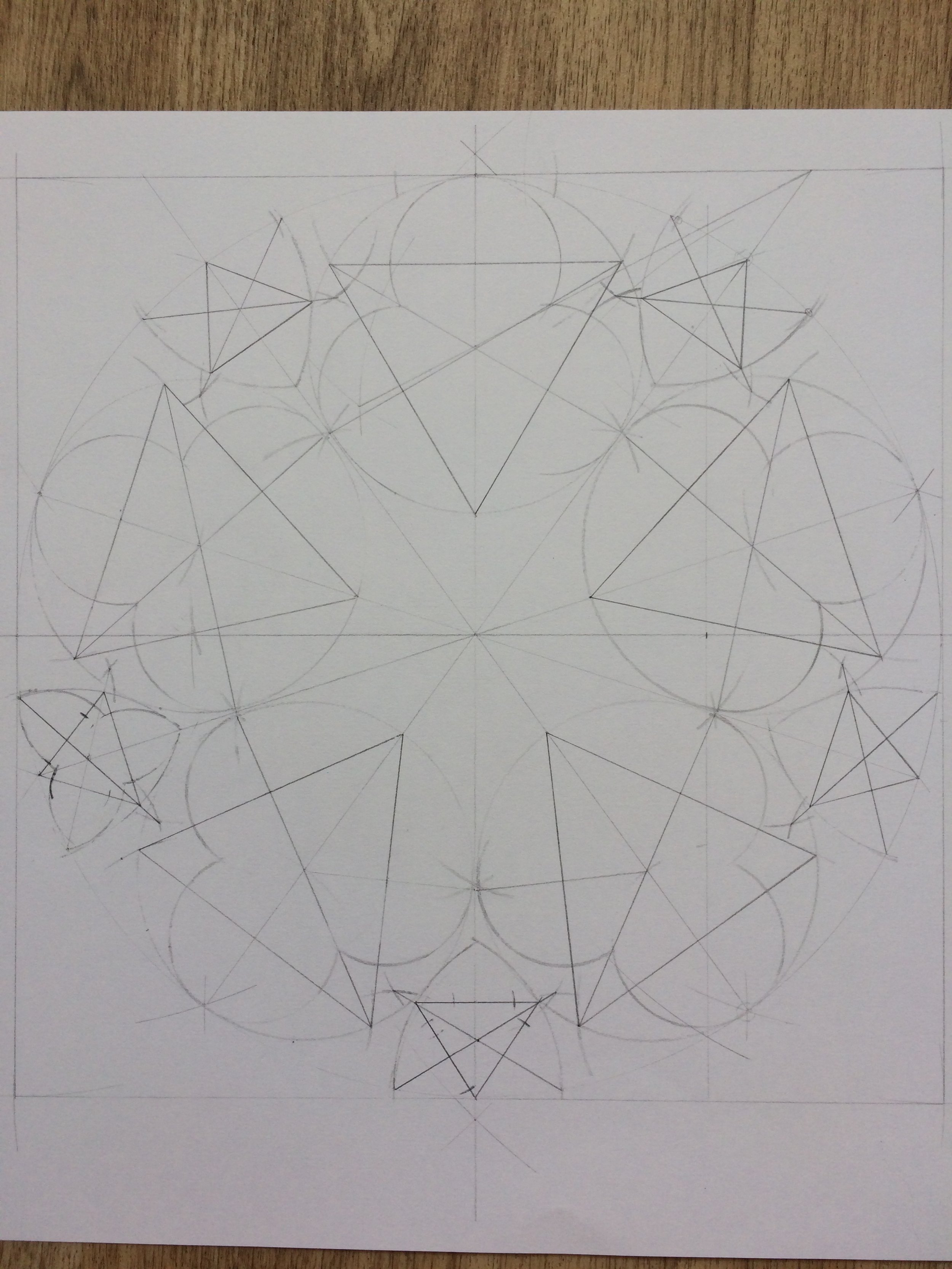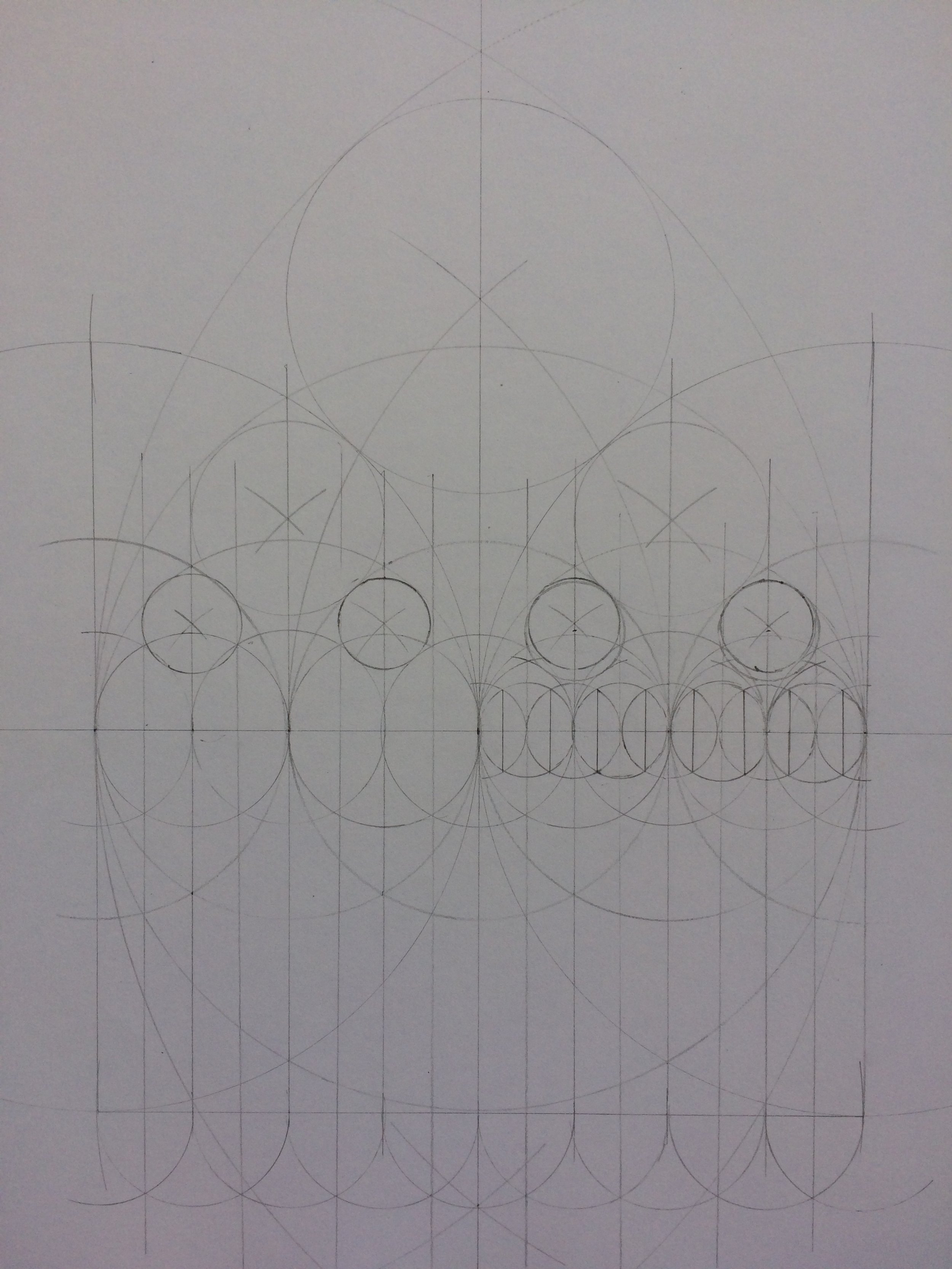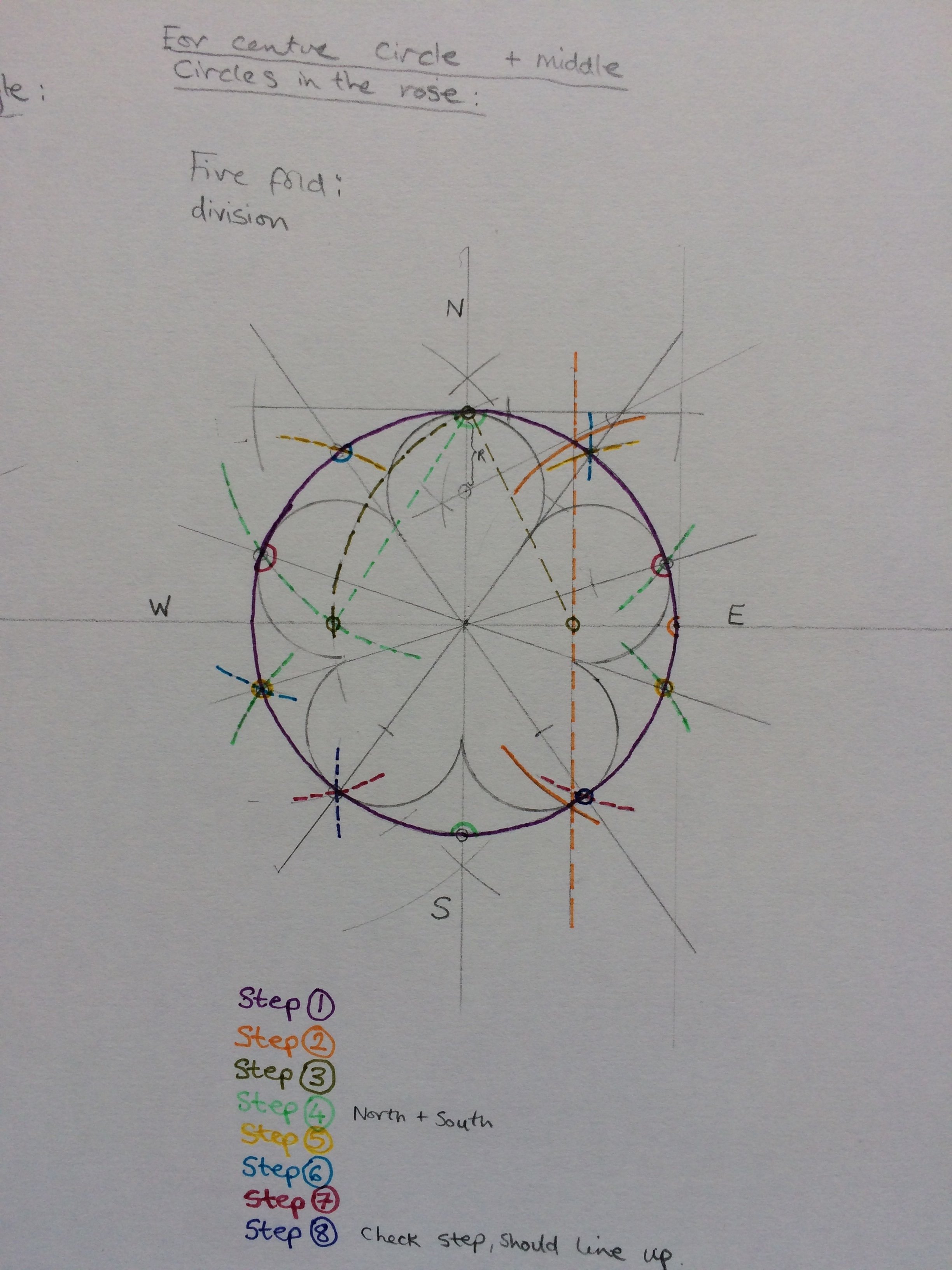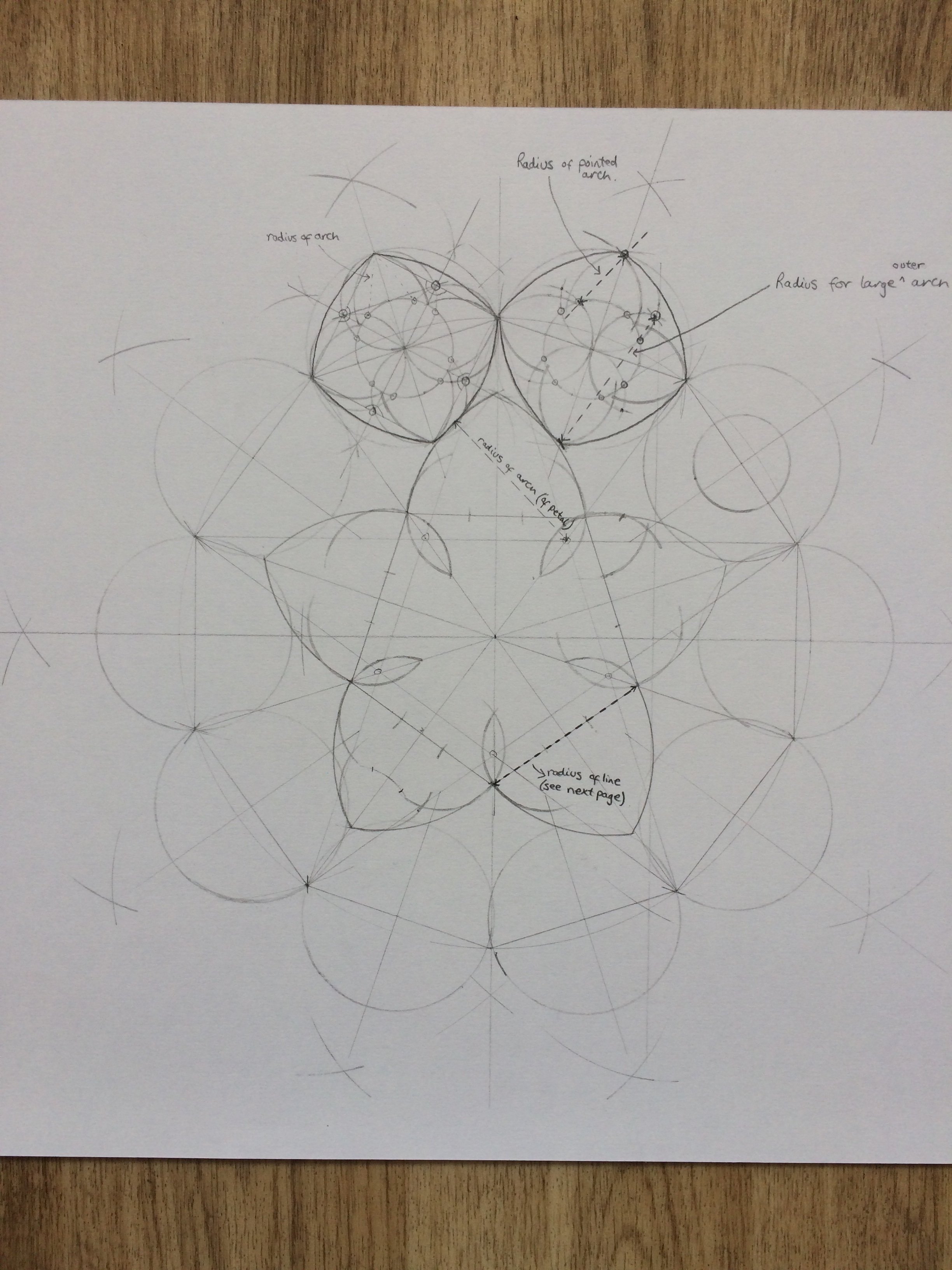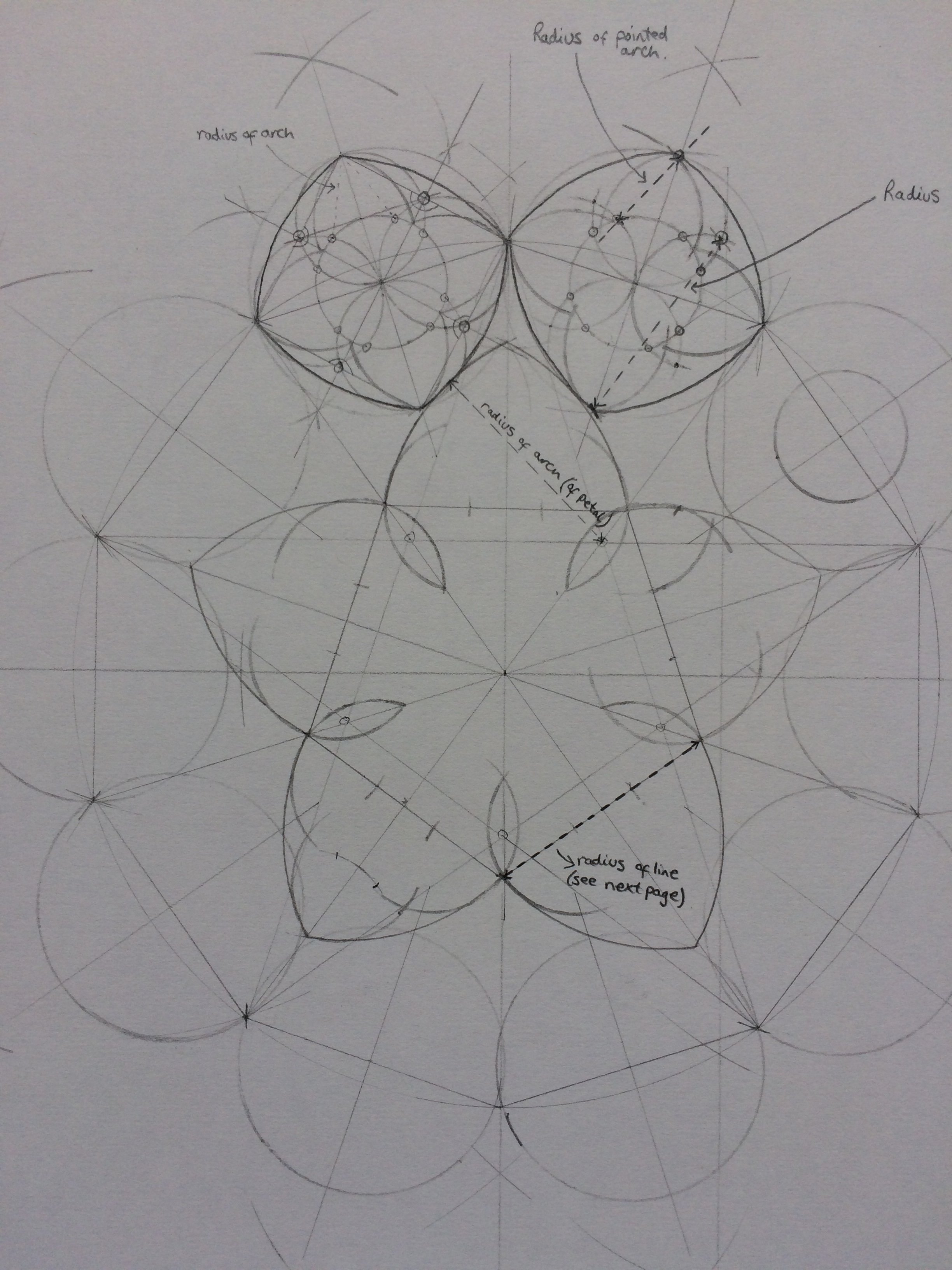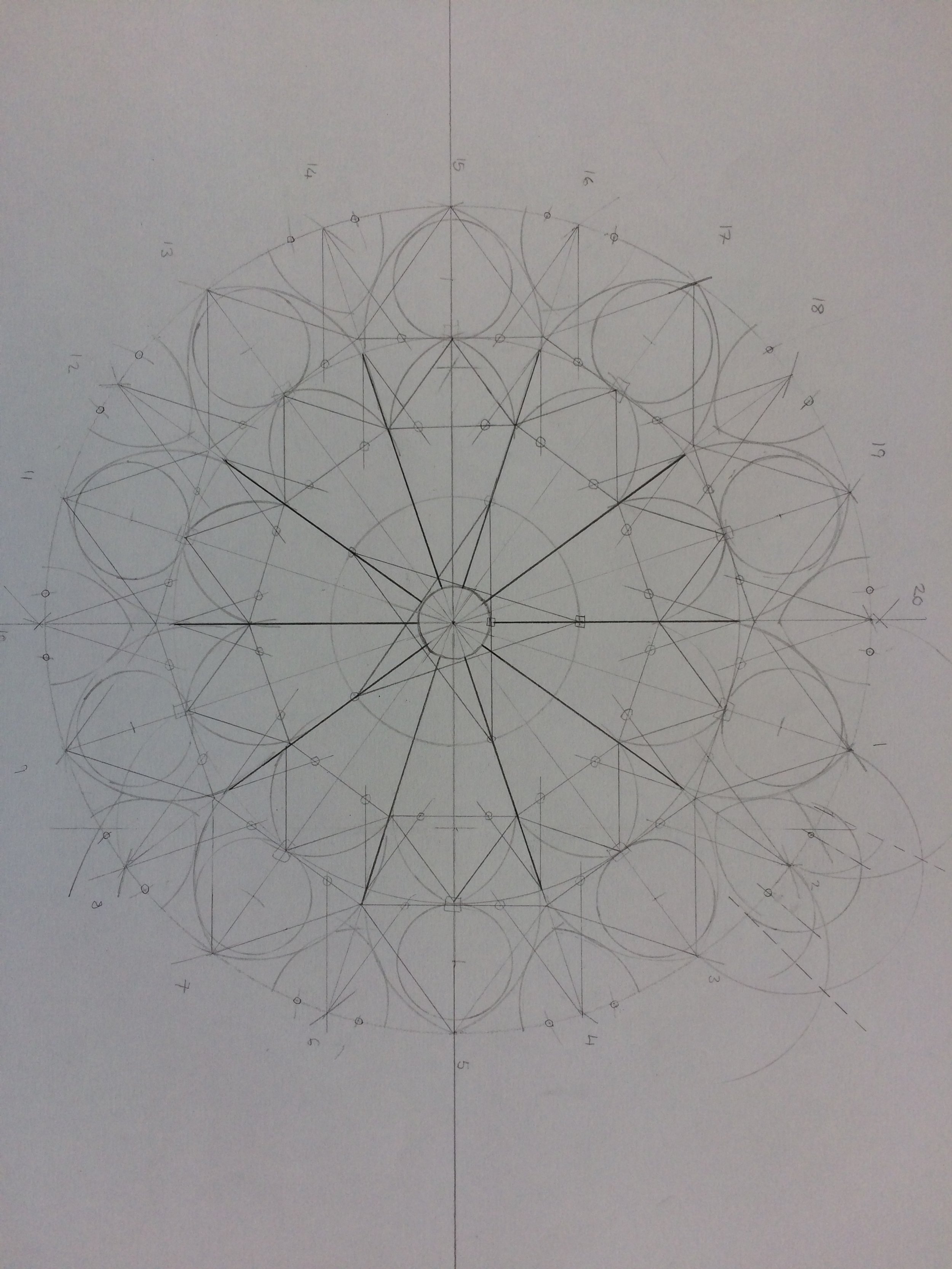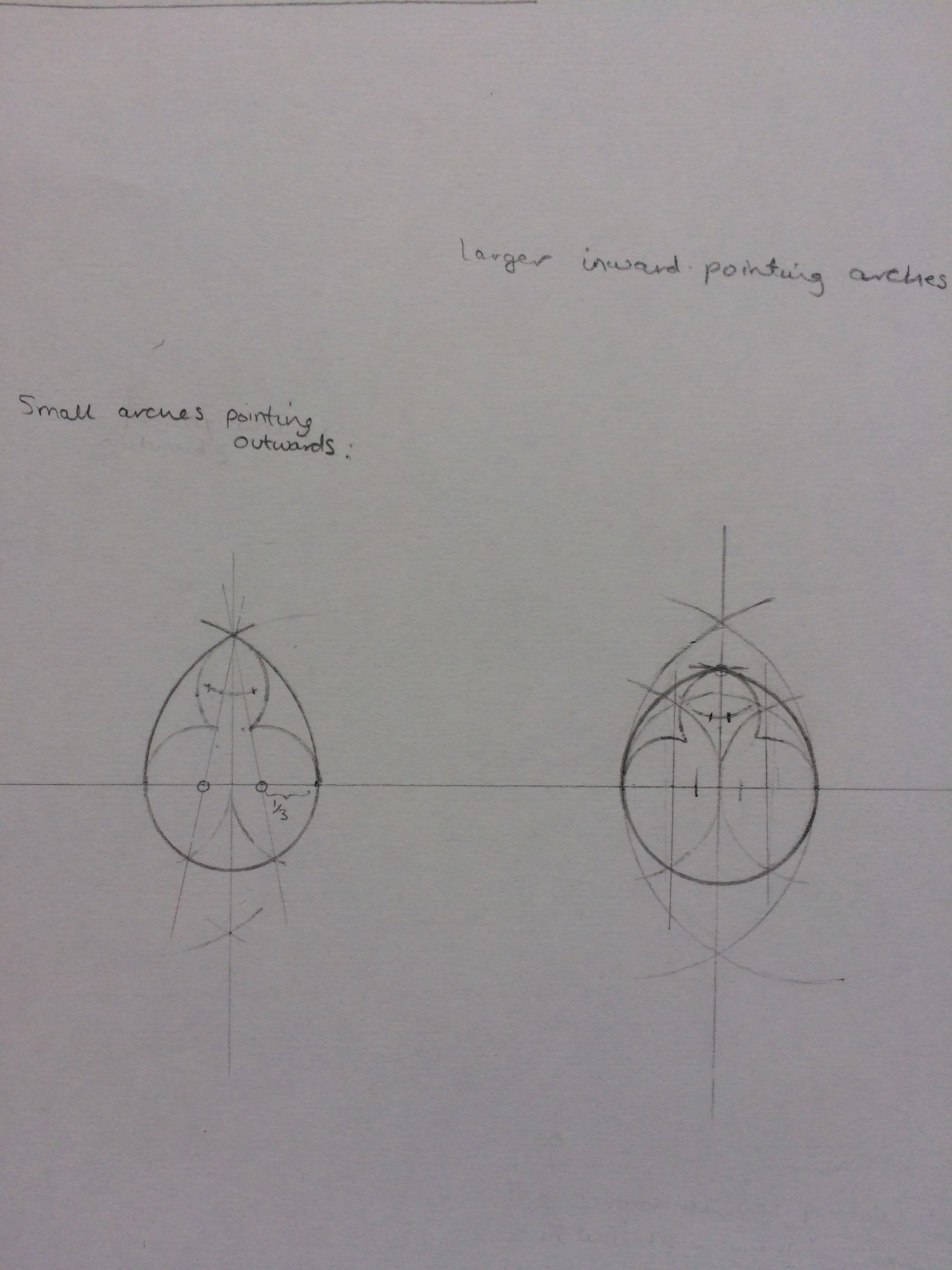I decided to explore sacred geometry within the Christian tradition in order to discover why Gothic rose windows have the impact on us in the way that they do. As I discovered the beauty comes from a form that is founded in wisdom and a respect for the natural order.
I first made a horizontal line, and then drew a circle on that line with my compass. The point here the circle crossed that horizontal line I used as the centre point of my second circle. The result is what is called the “vesica pecis” or “fish bladder” in Latin. This mandorla shape looks a lot like a fish, an early Christian symbol. It is also used in Christian art to contain images of the figure of Christ or the Virgin Mary. In gothic rose windows stained glass images of the saints or other holy images would be contained in this.
I moved on to draw a ‘Flower of Life’ by dividing my circle on the compass in to 6 parts. I also did exercises practicing how to divide a circle in to 3, 5, 6, and 8 parts, how to form passive and dynamic squares and how to bisect an angle using two perpendicular lines. I then moved on to drawing the arches which are usually seen surrounding the roses. I used my compass to draw an equilateral arch, a 2/3 arch and a ¾ arch. I also measured out the small arches pointing outwards and larger inward pointing arches that are often used for embellishment on the outer parts of the roses. Eventually I took some images of my favourite rose windows and tried to draw them out.
This way of learning geometry would have formed part of the Trivium (grammar, logic, rhetoric) and the Quadrivium (arithmetic, geometry, music and astronomy), of a Liberal Arts education in the Middle Ages and beyond. When geometry is taught in this way it becomes very instinctive and natural, as one line builds onto another line. Shapes and lines are formed by their connection and relationship to one another, in a very logical and meaningful sequence. I think this would form an excellent part of a homeschooling programme.

